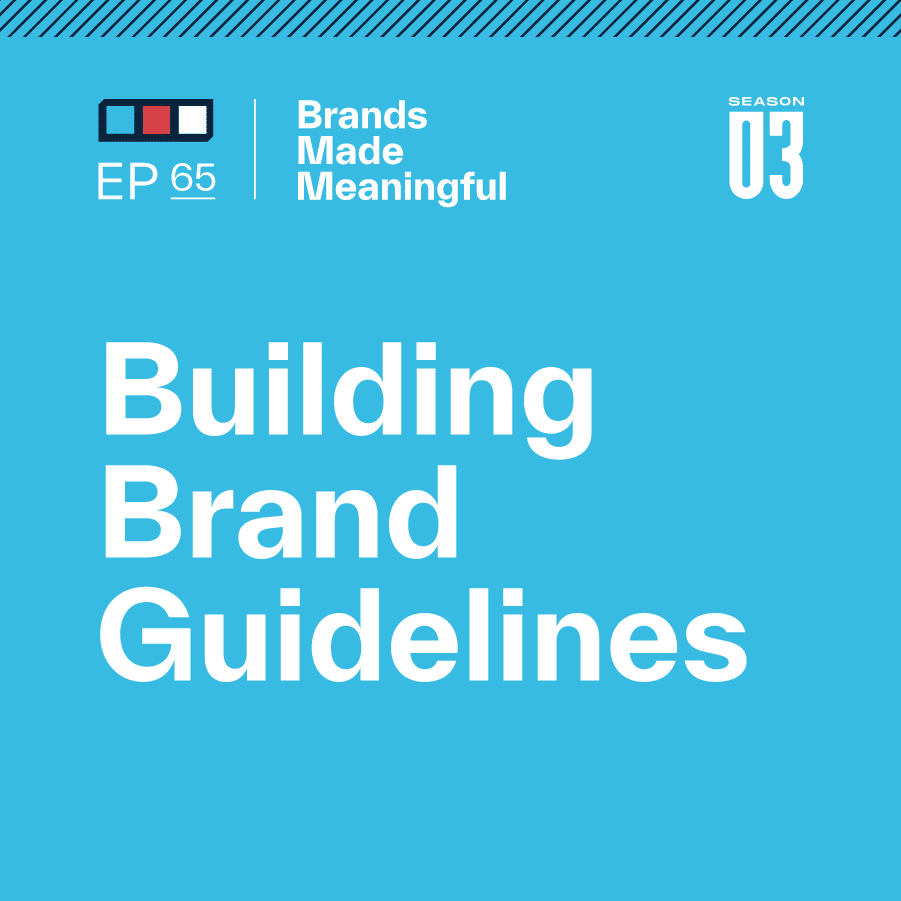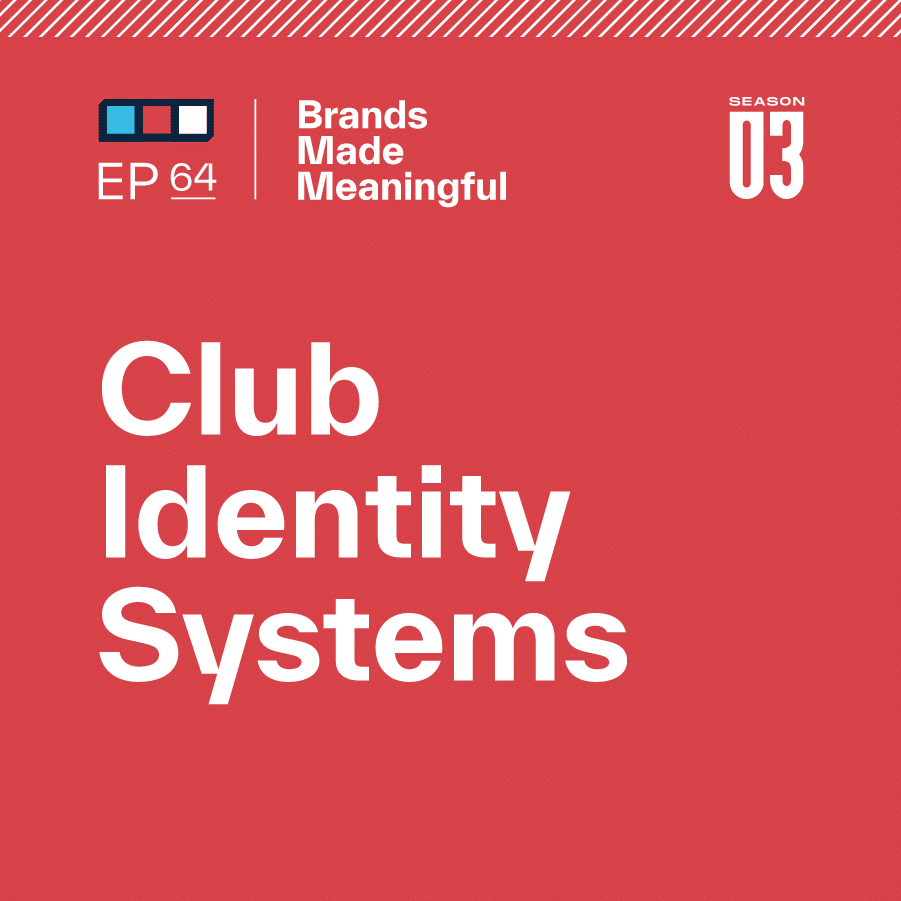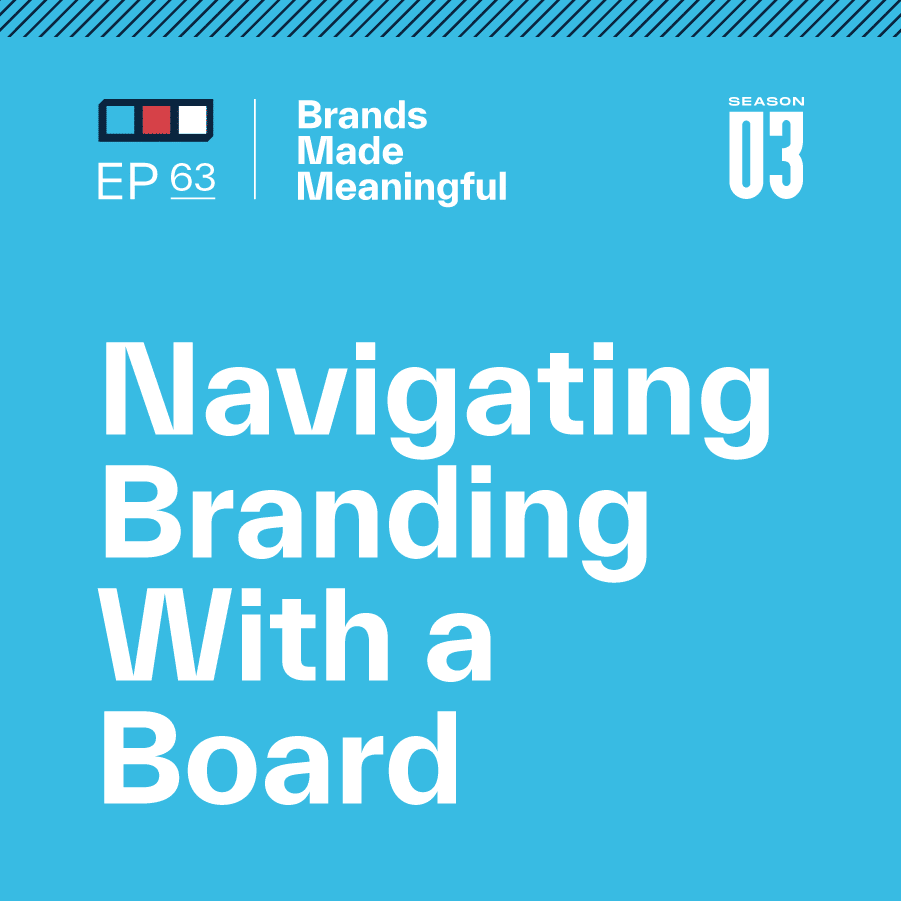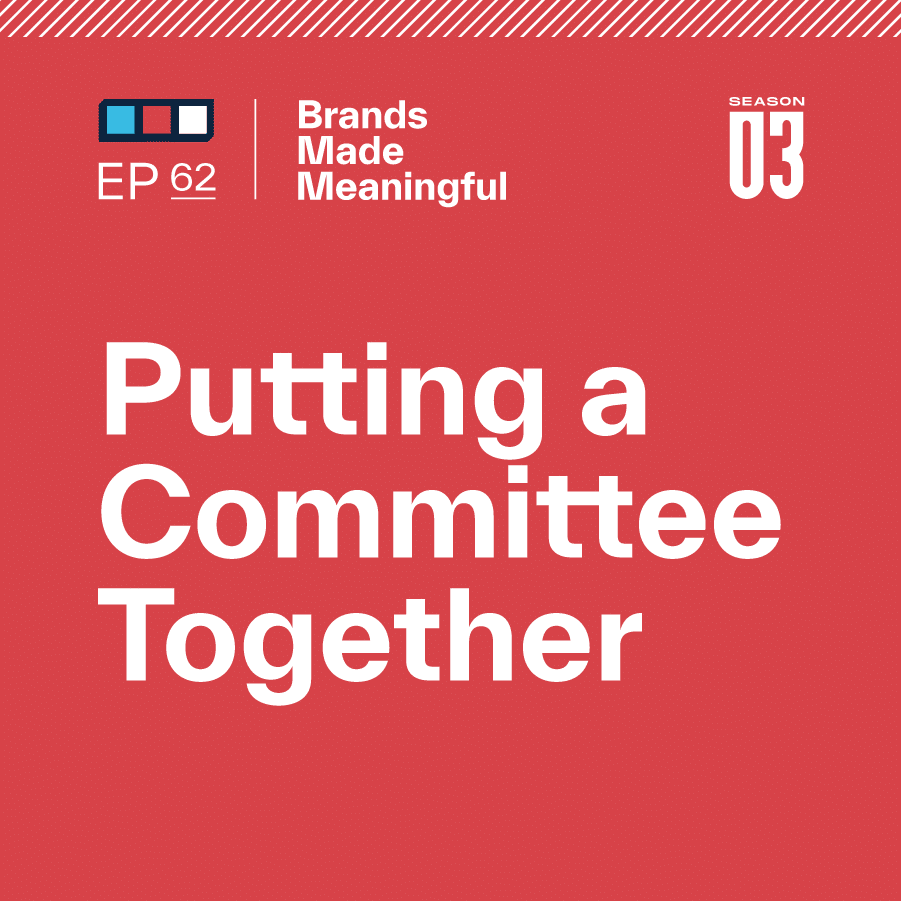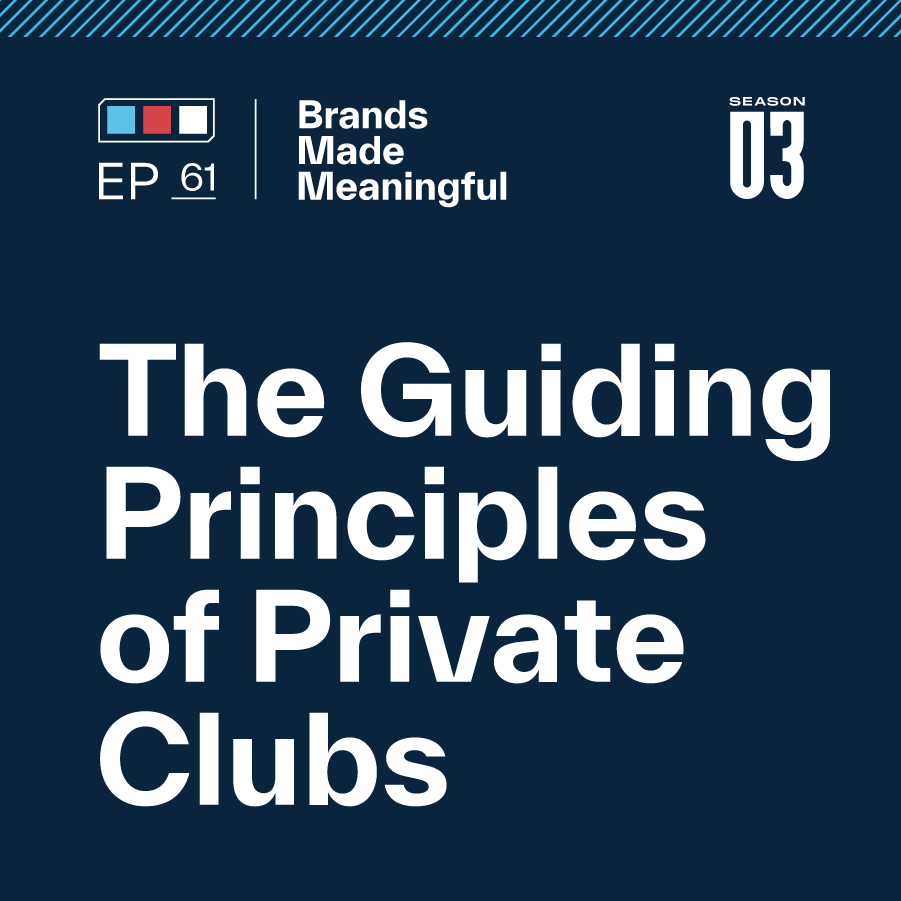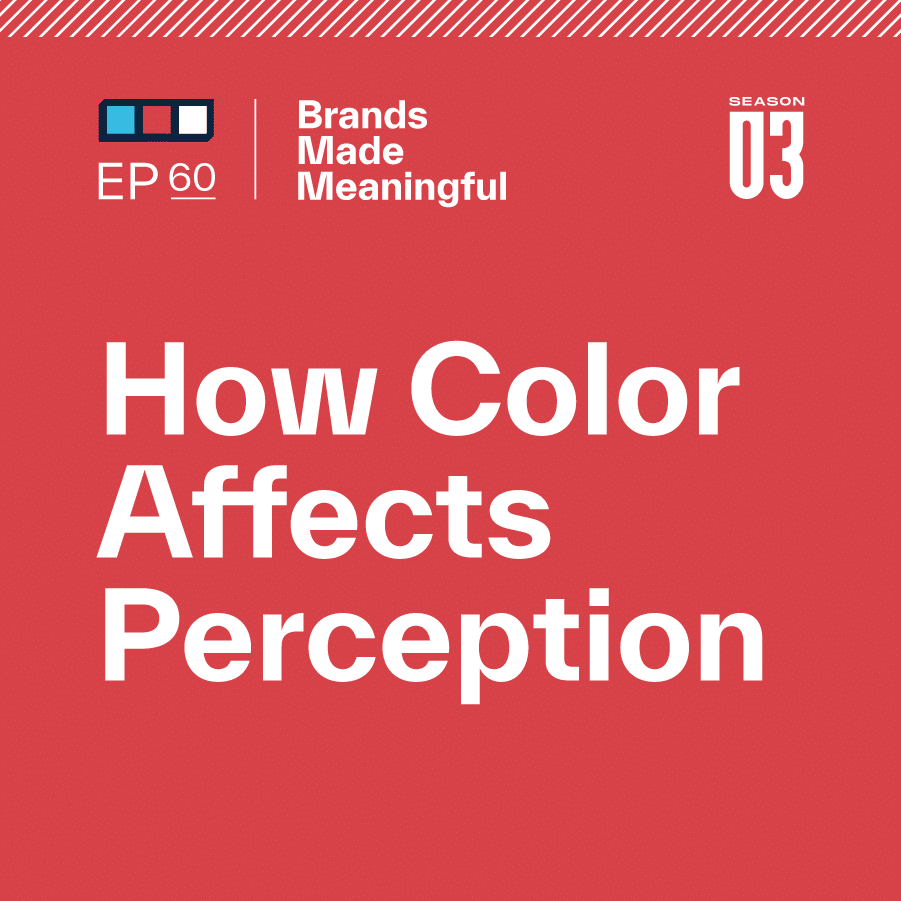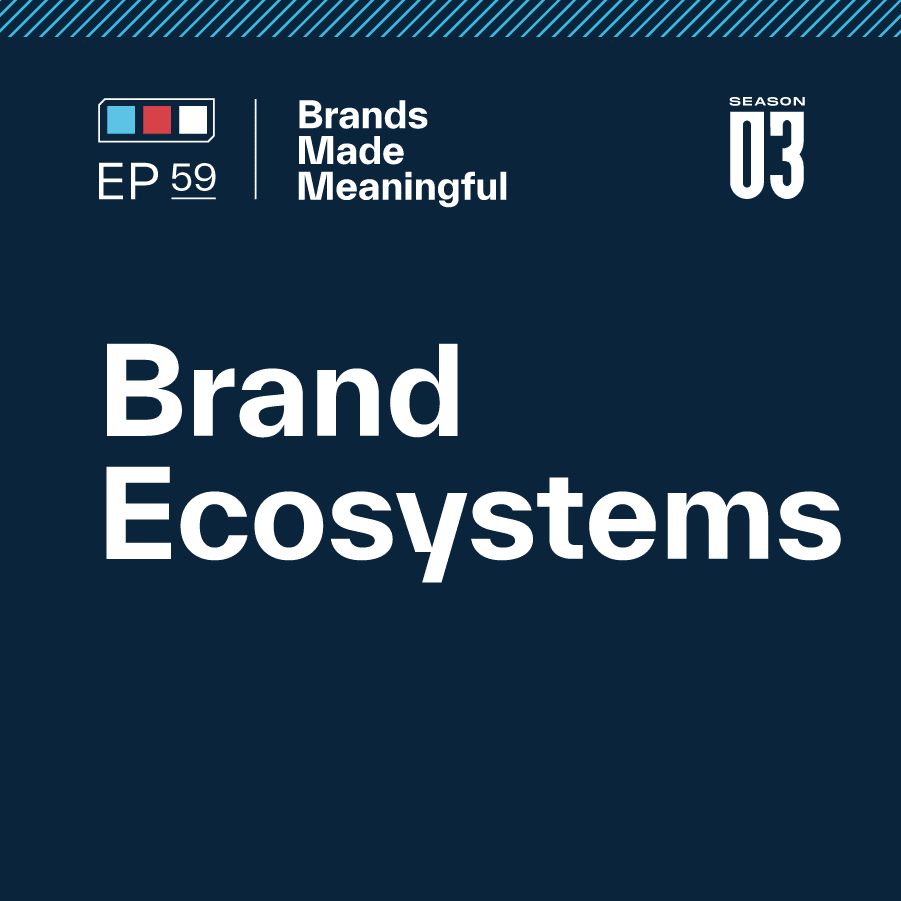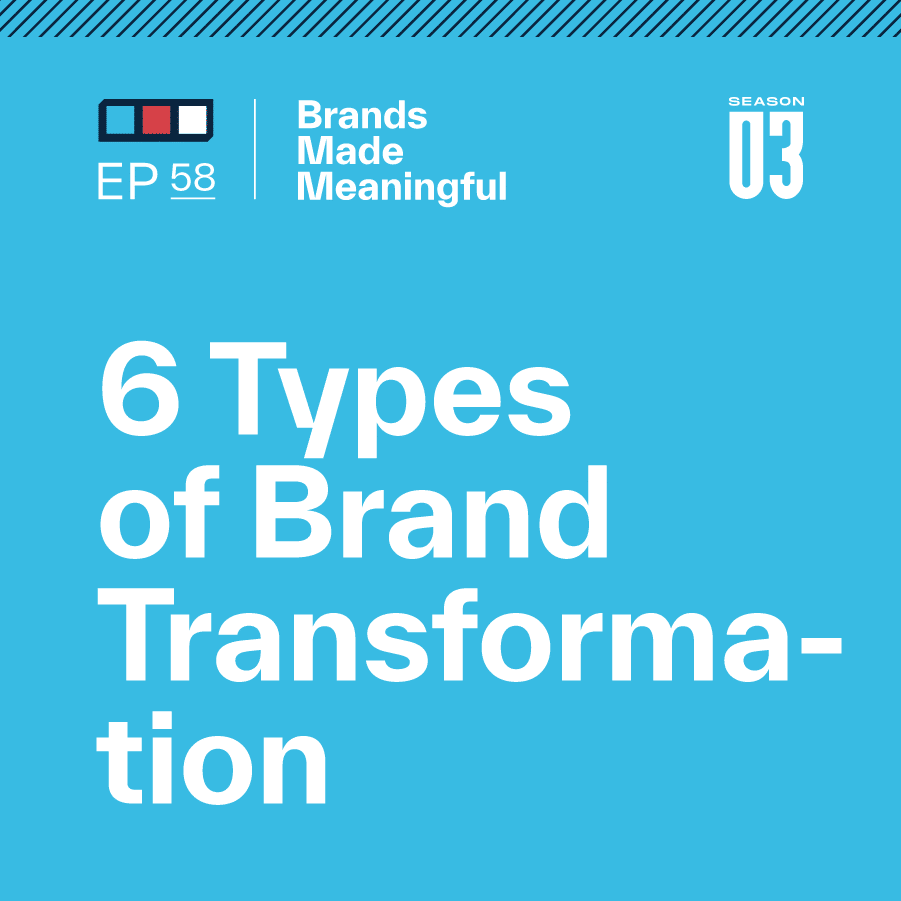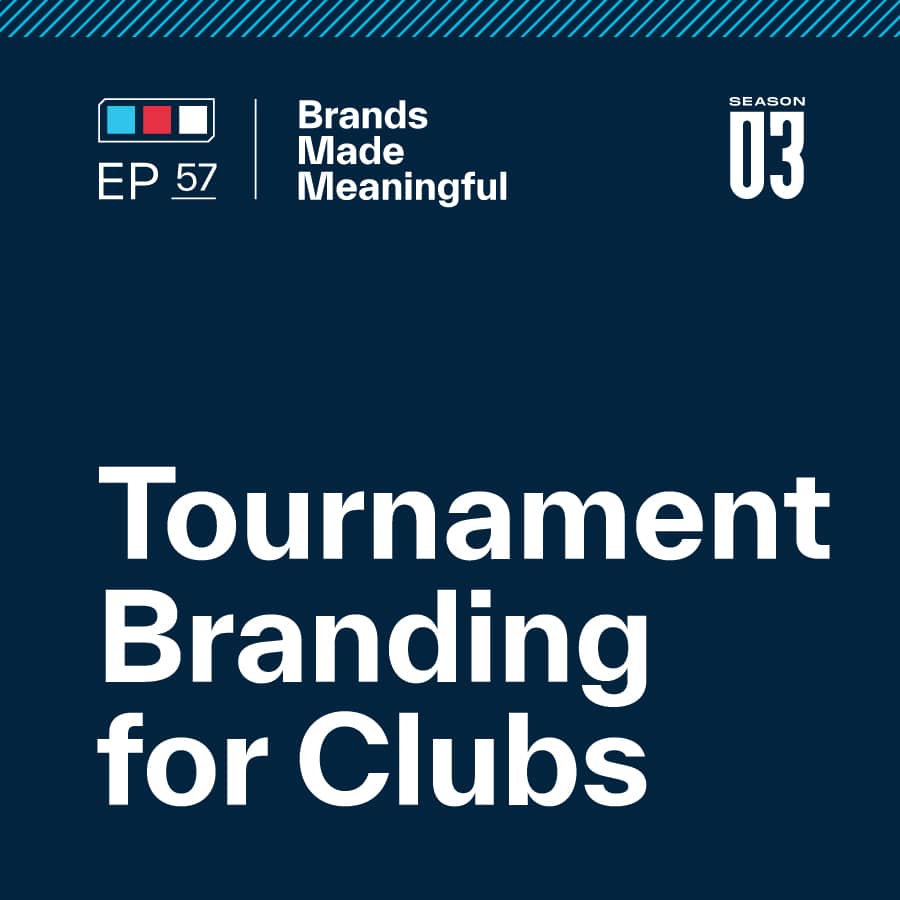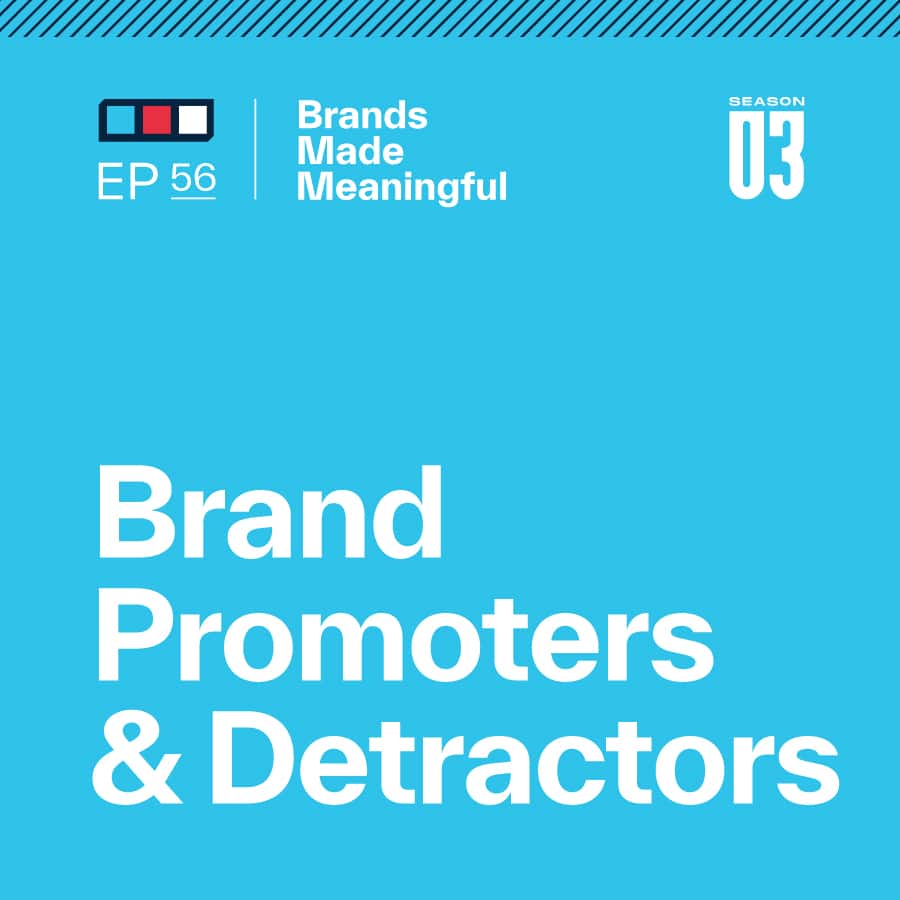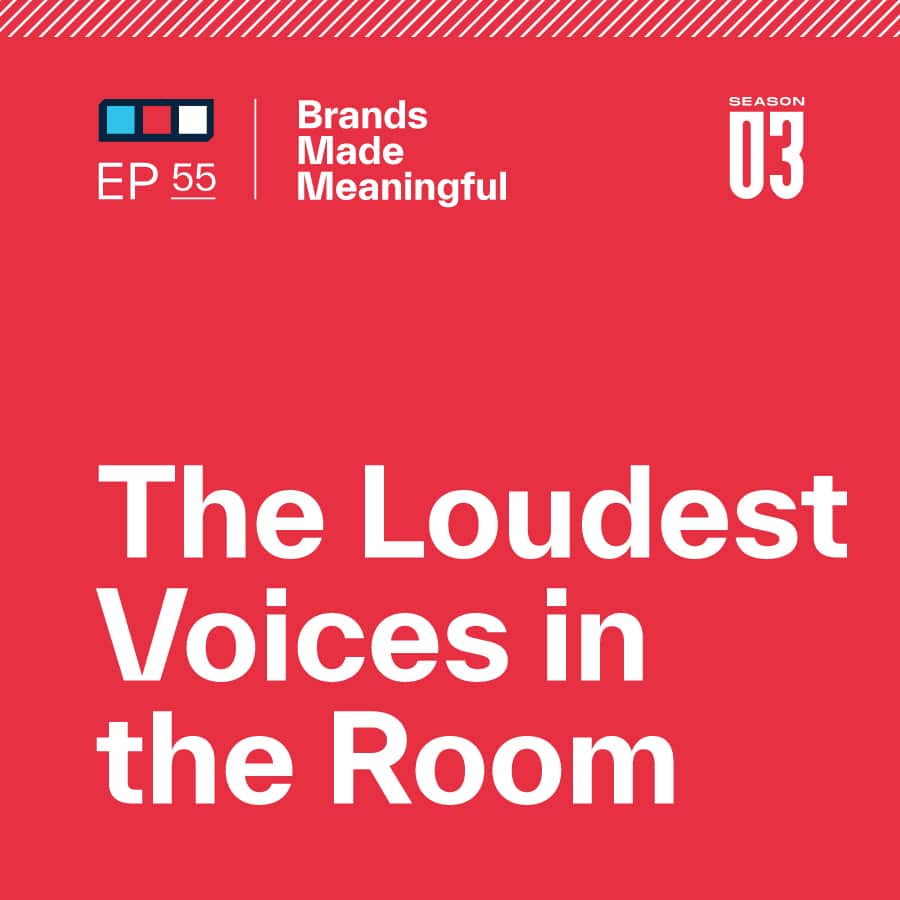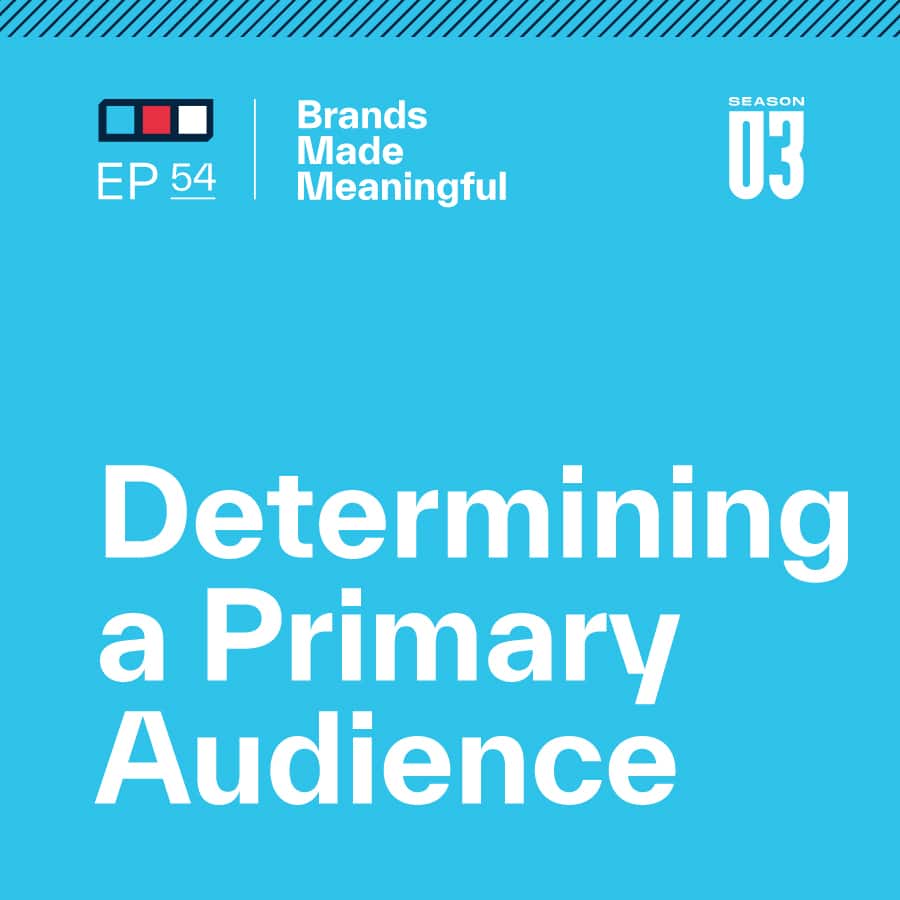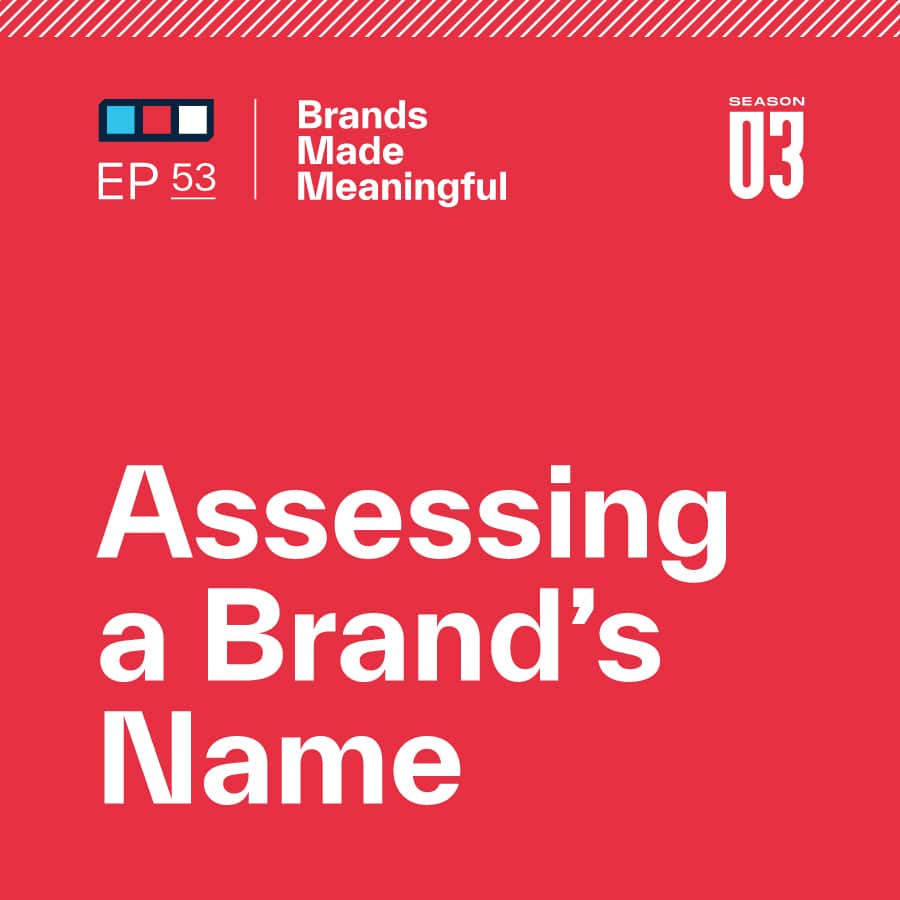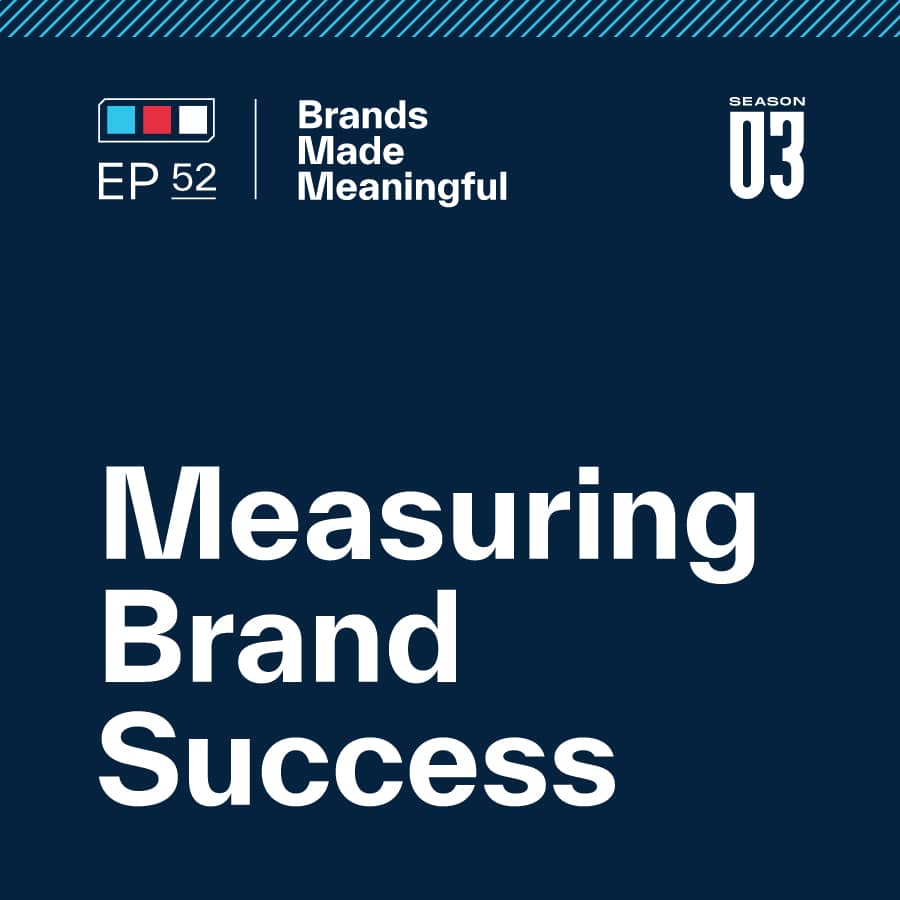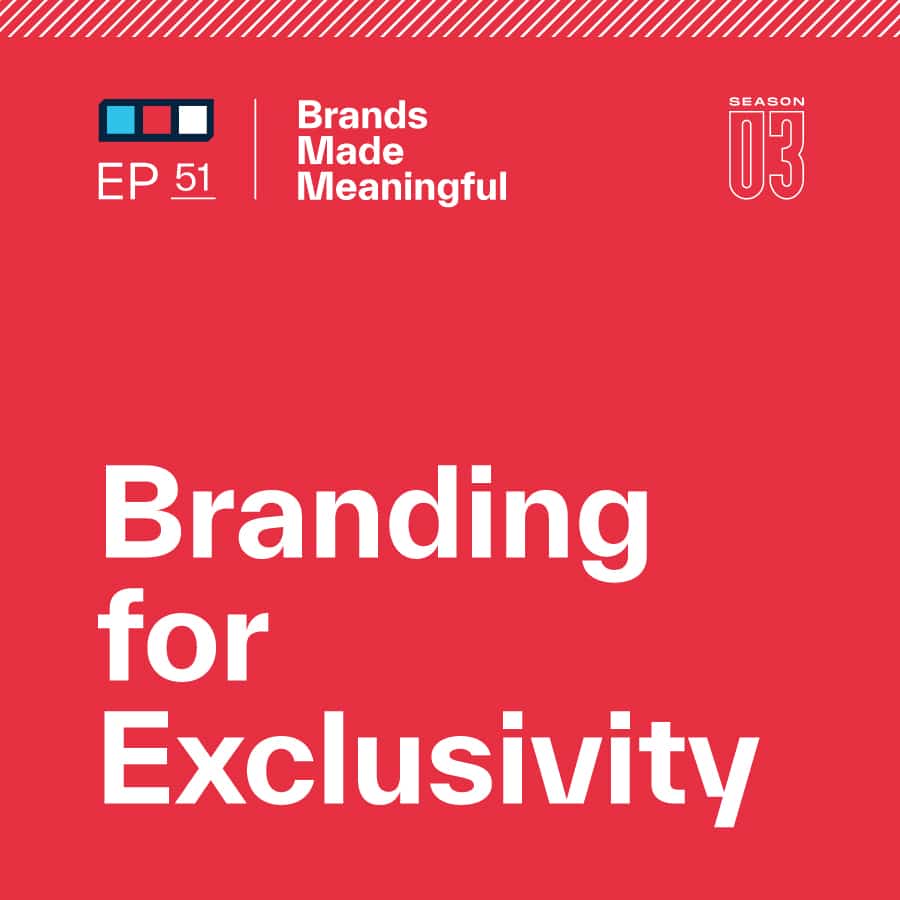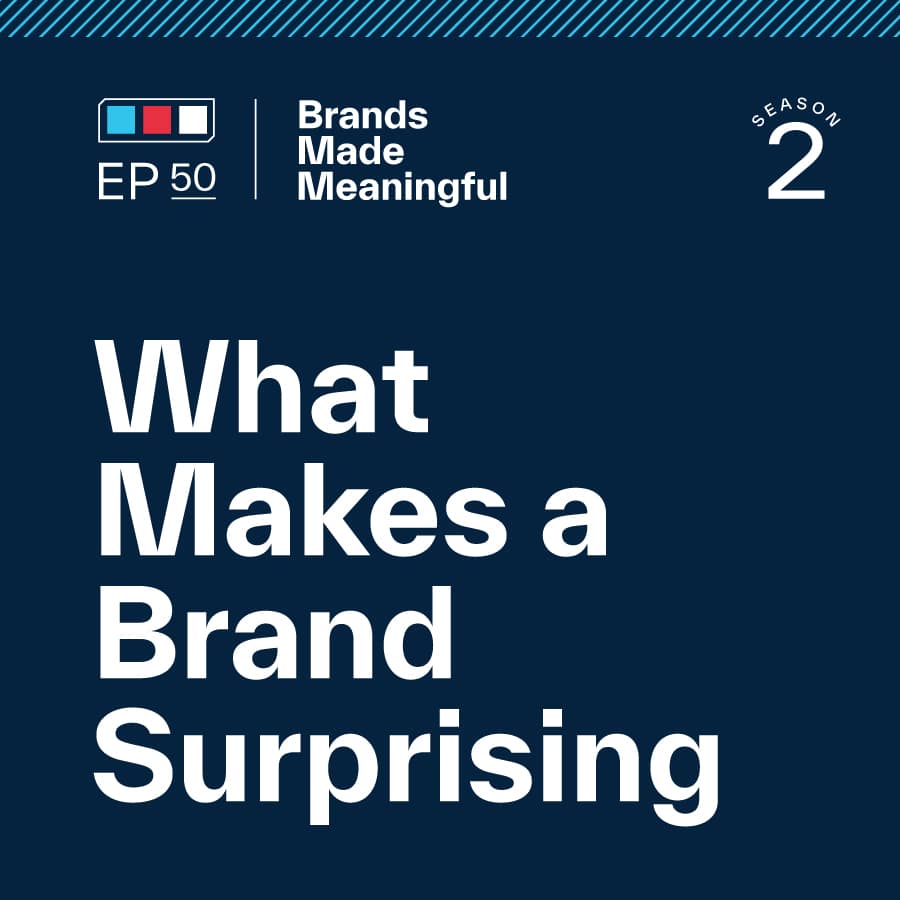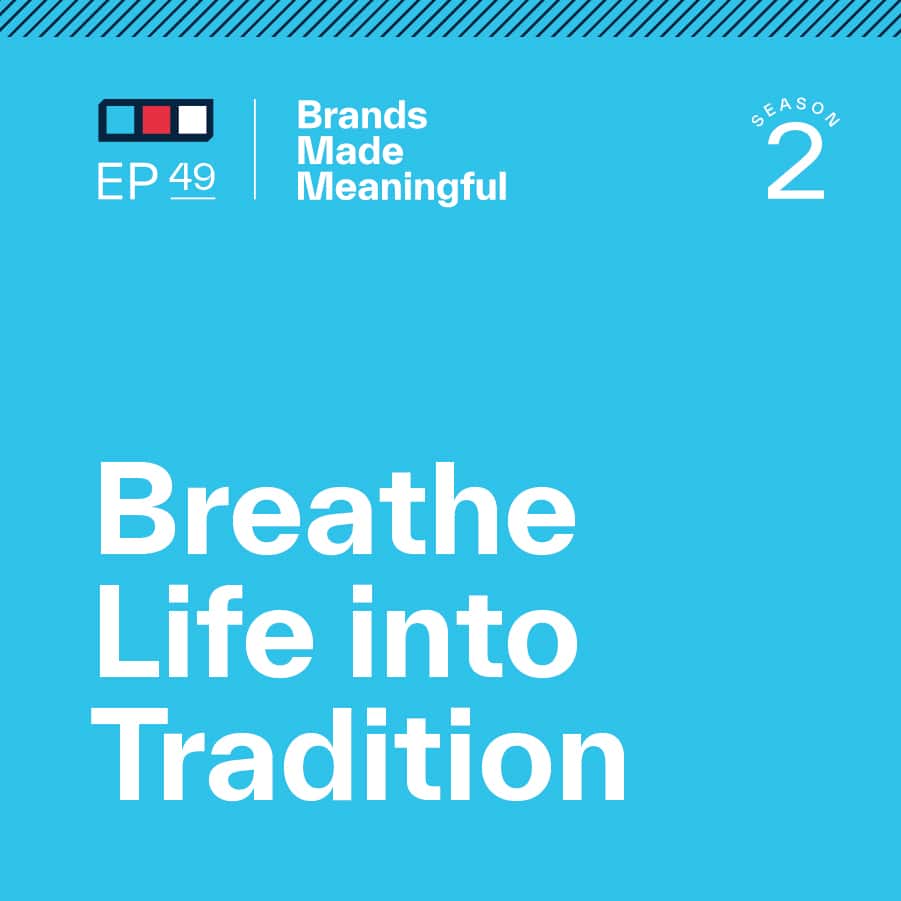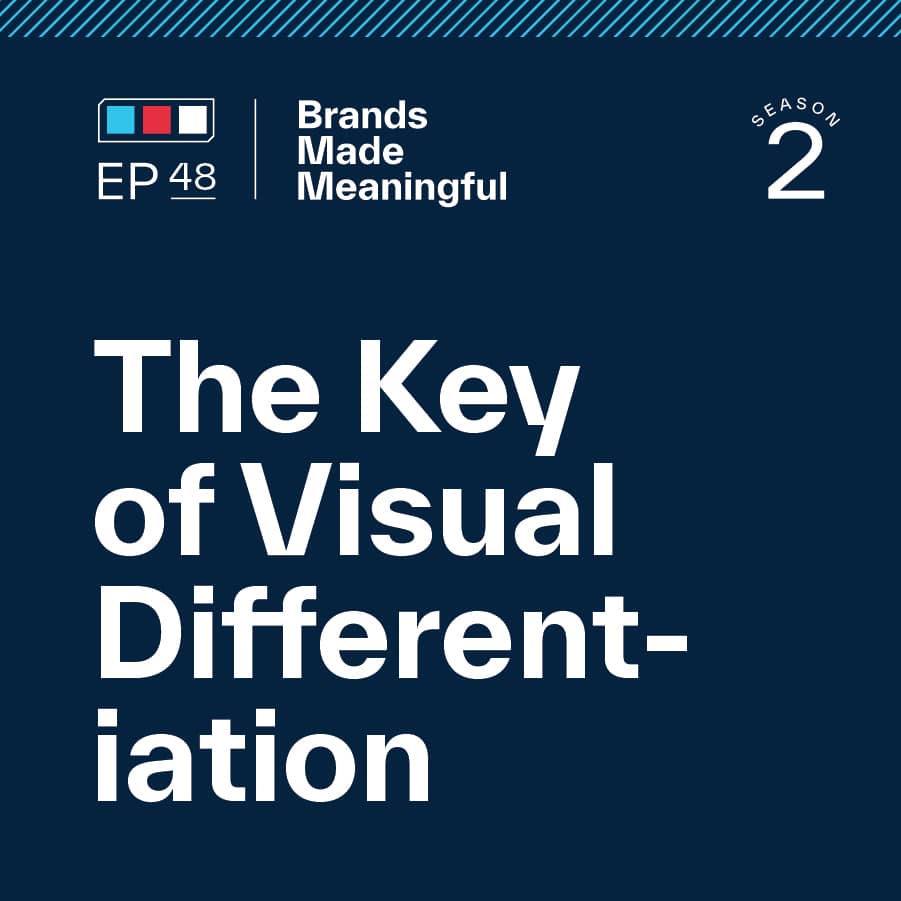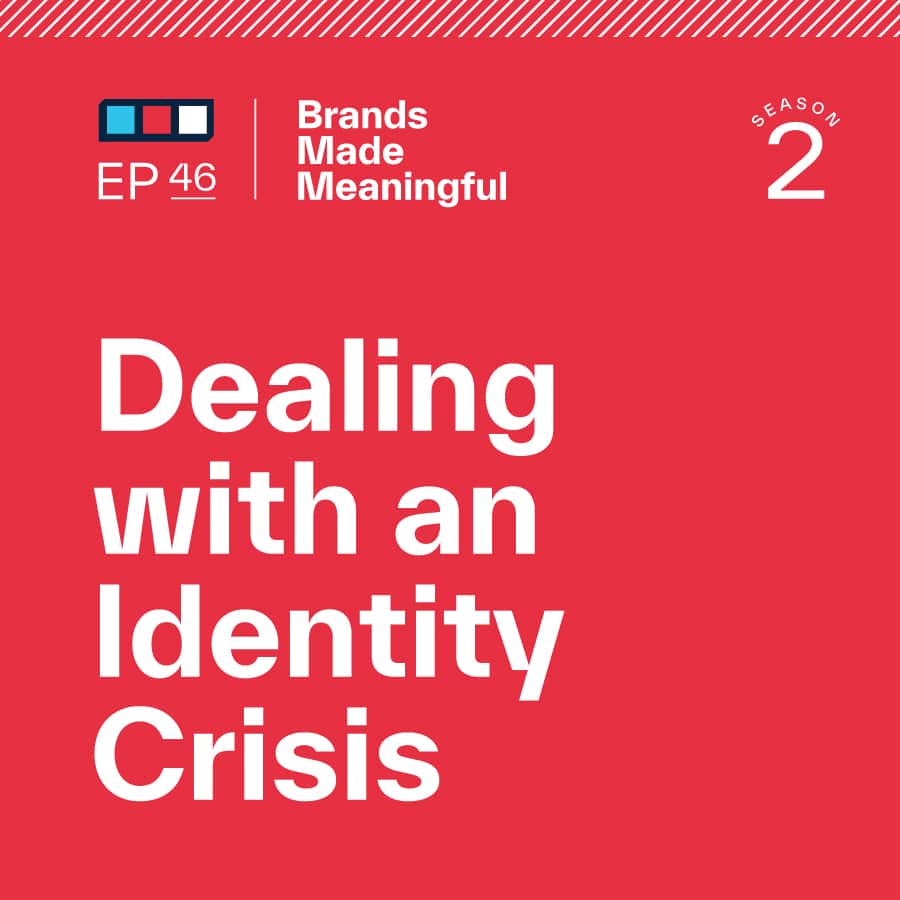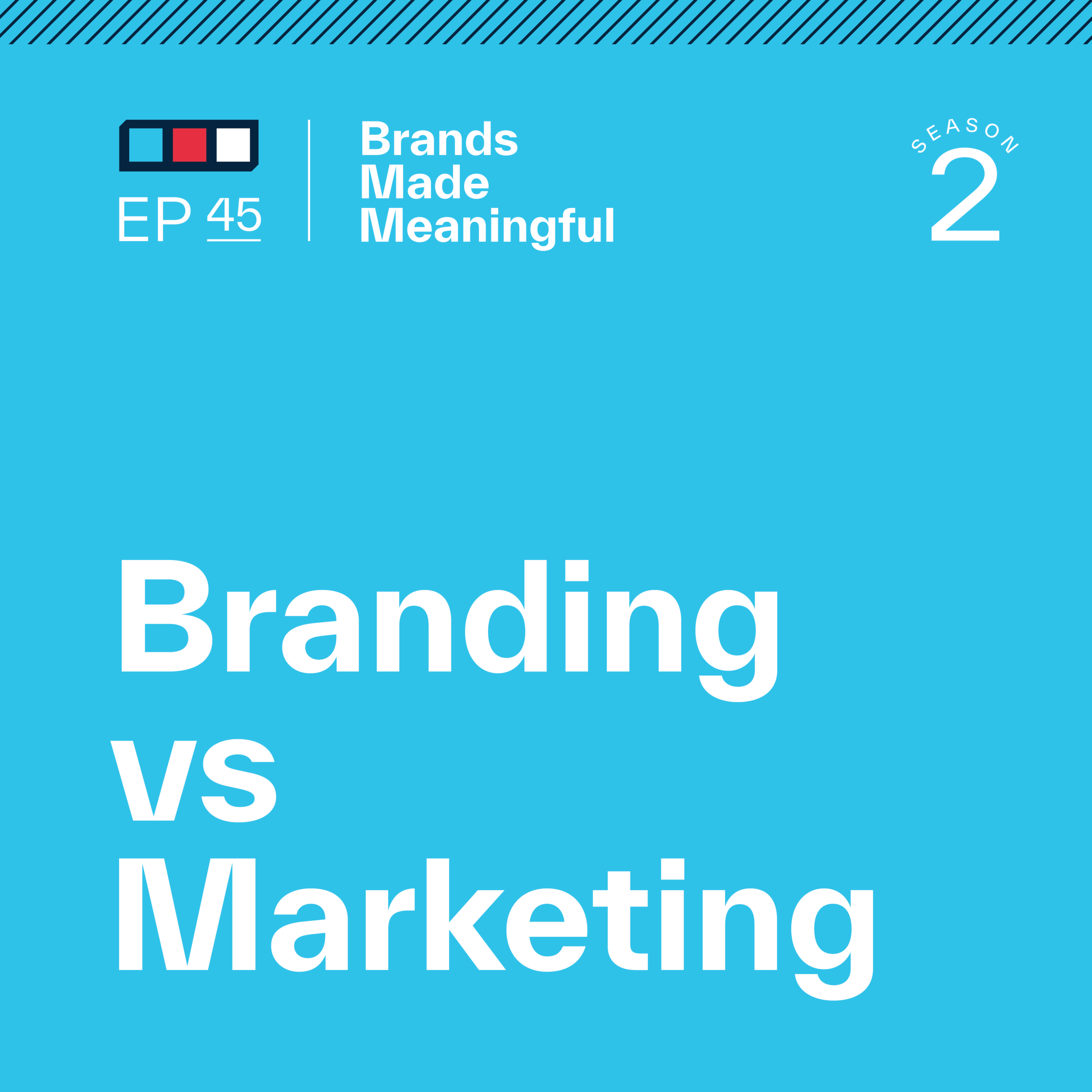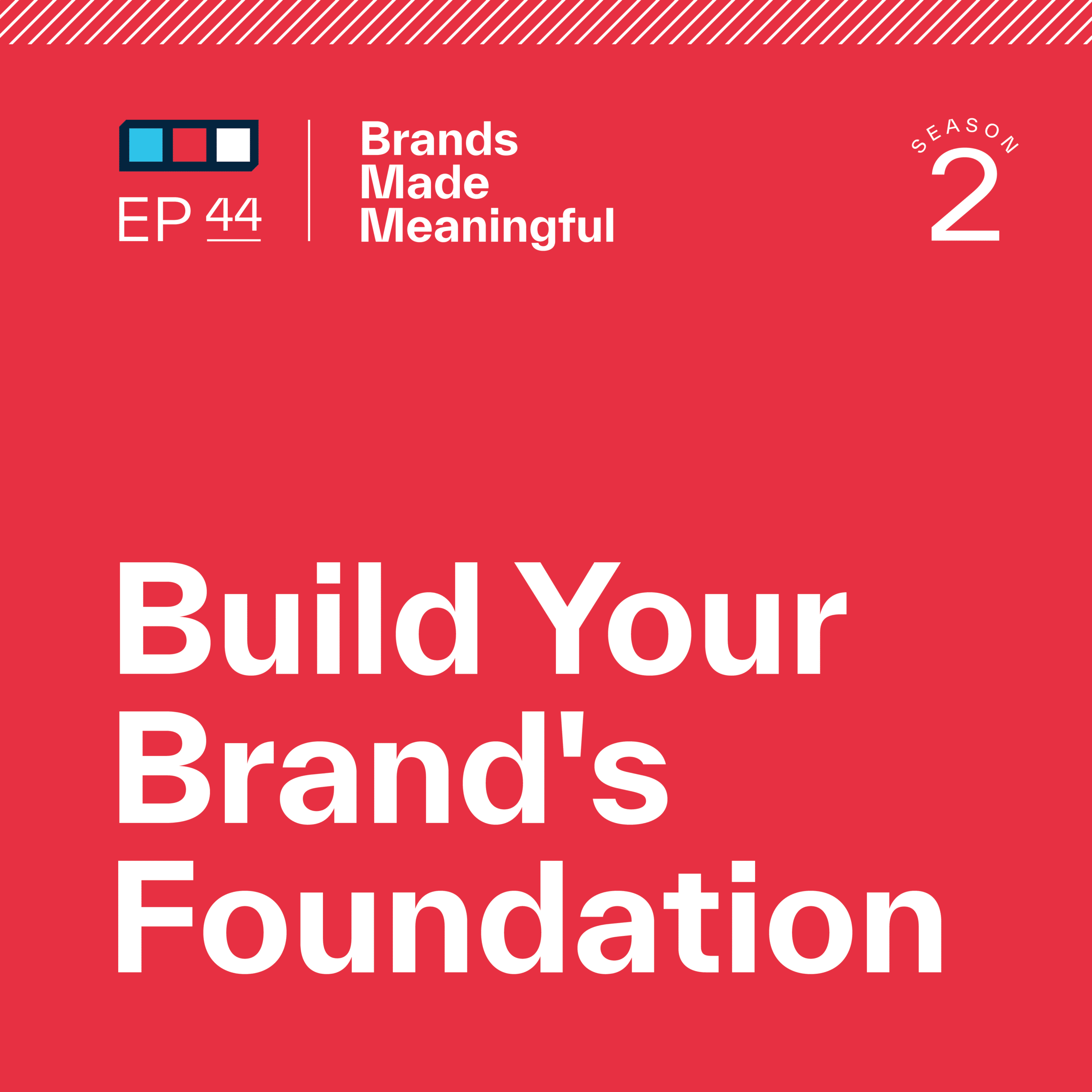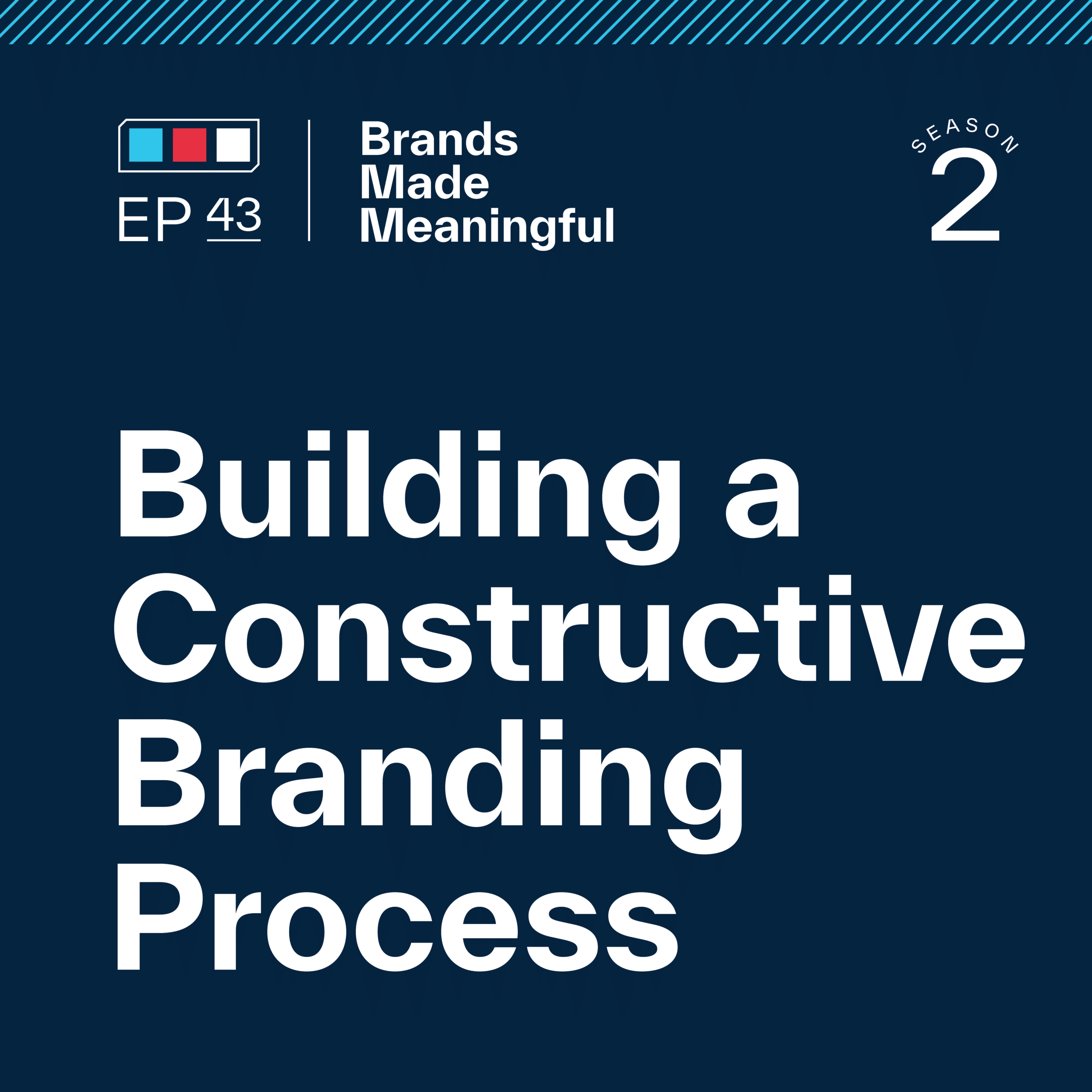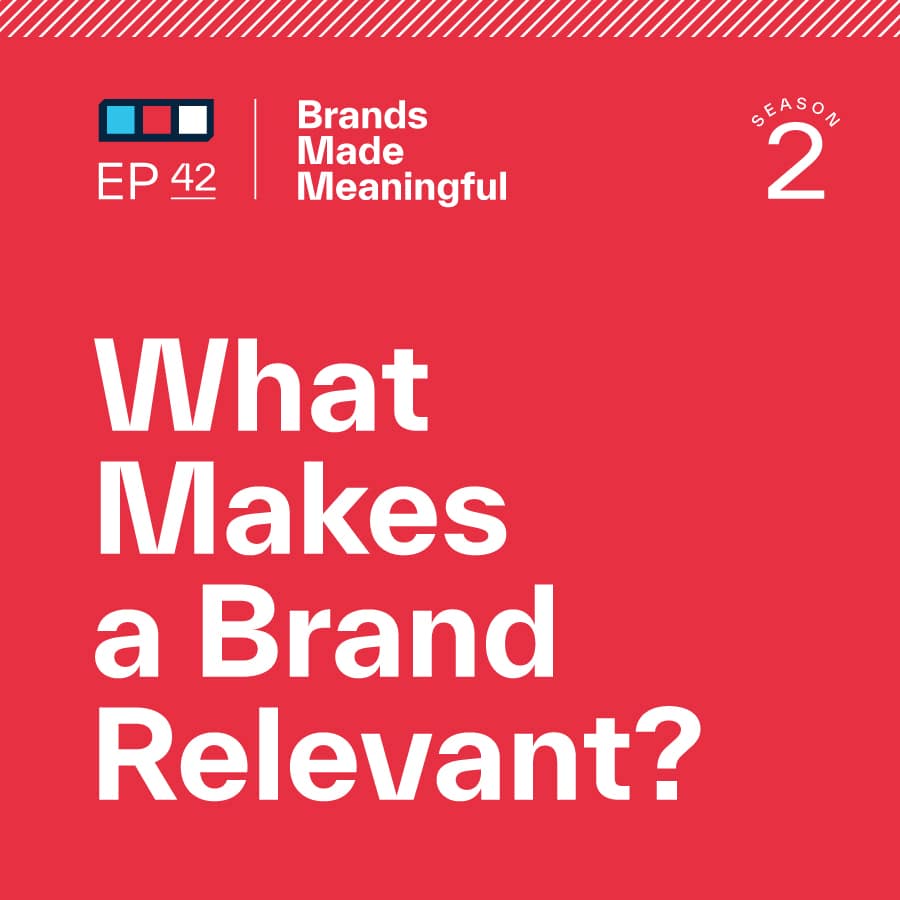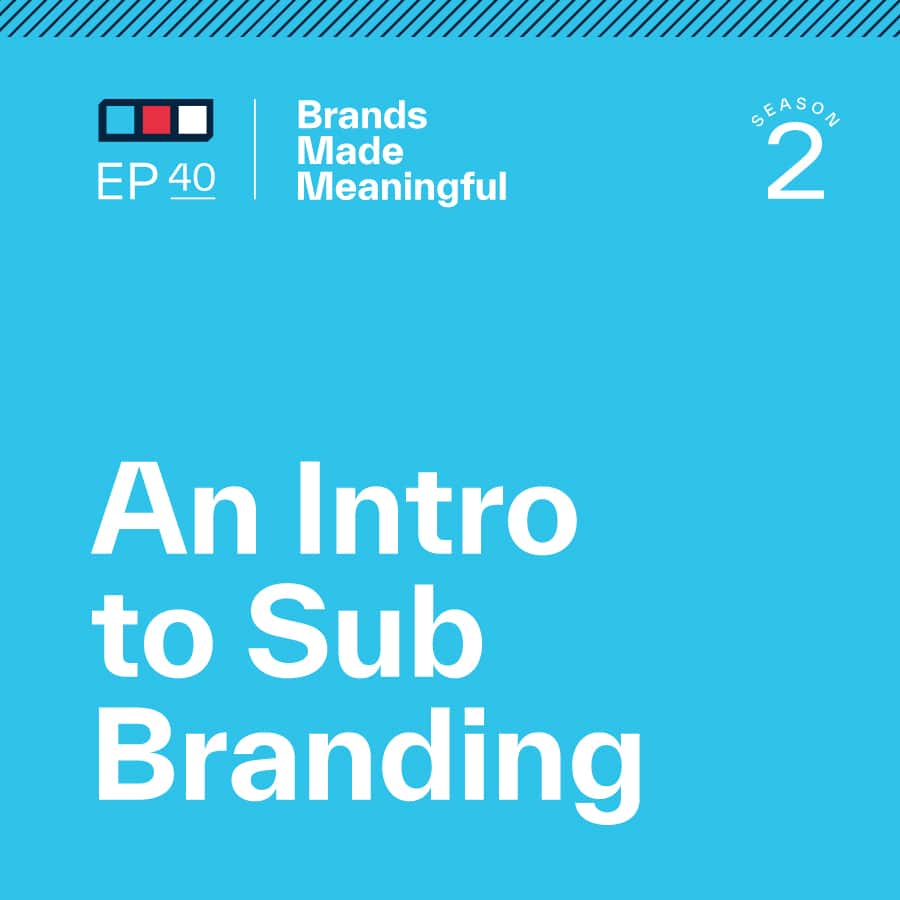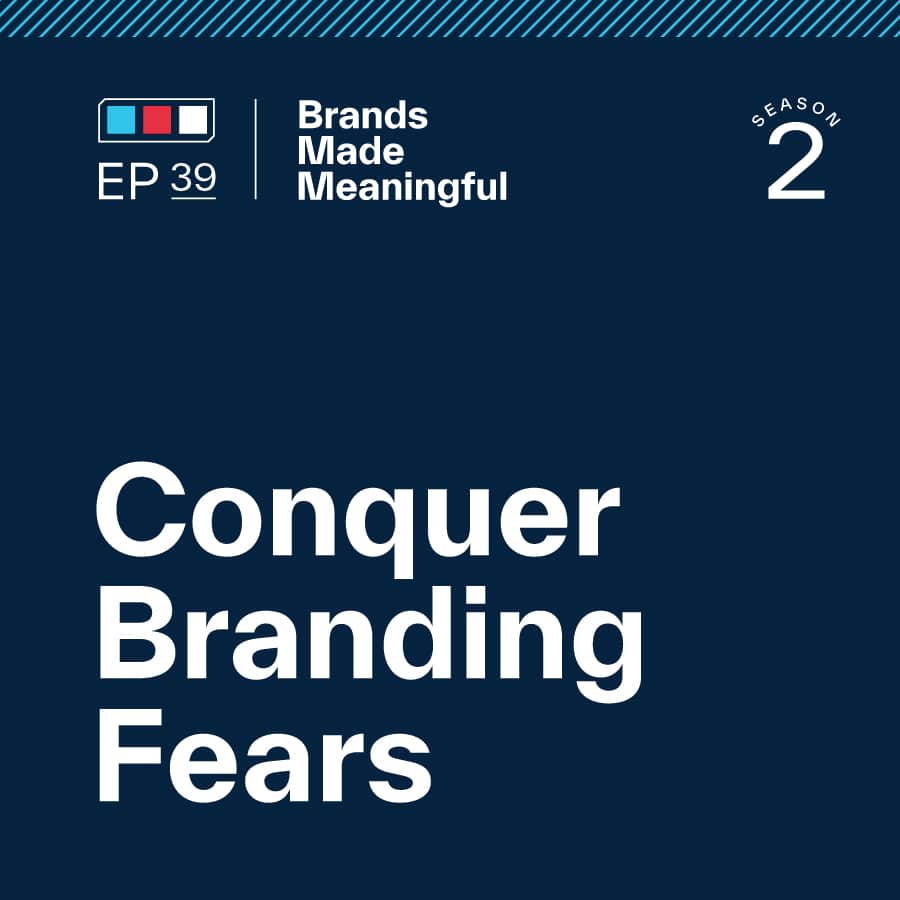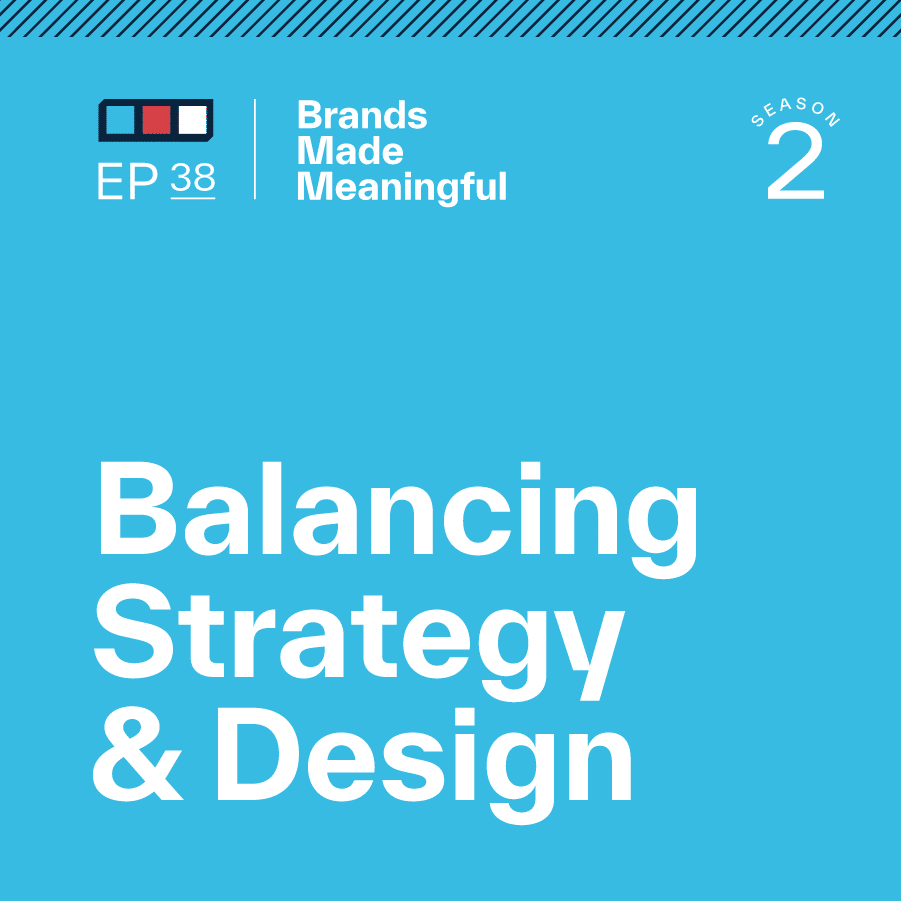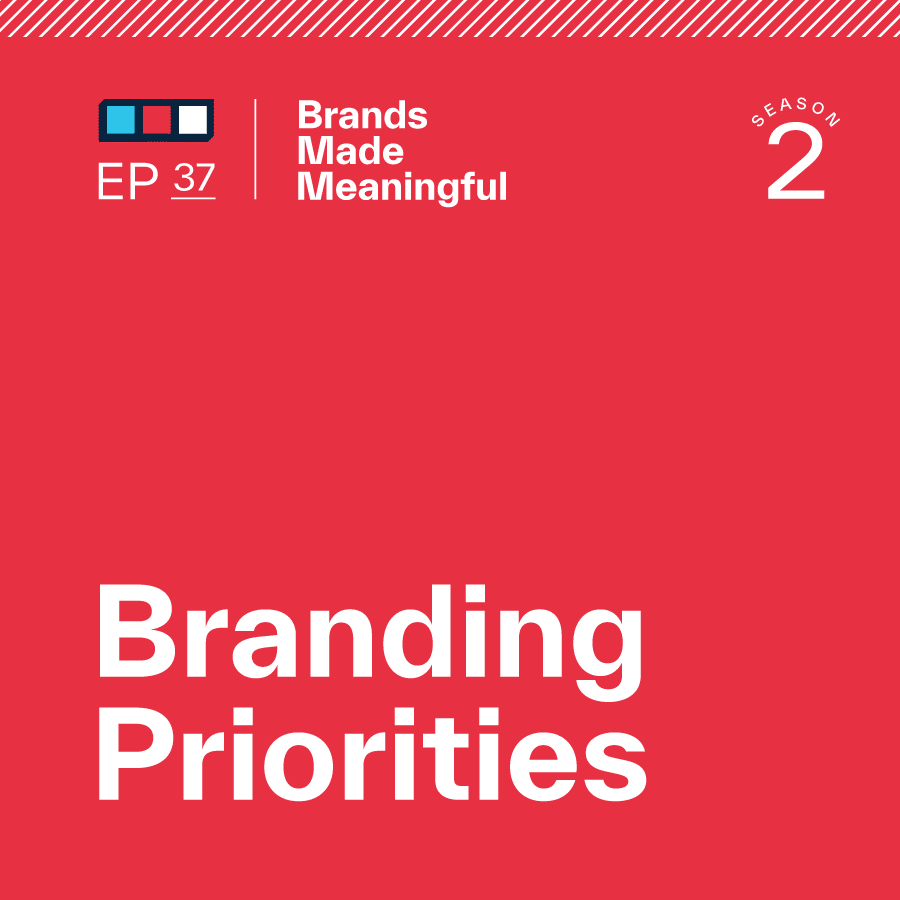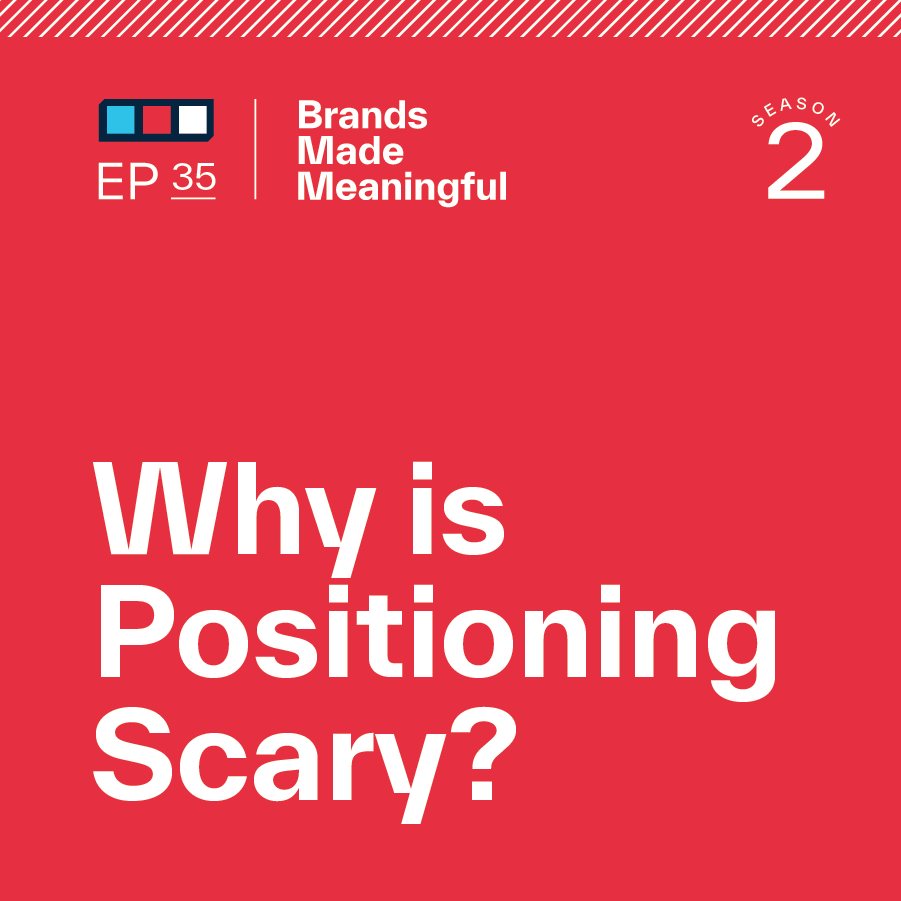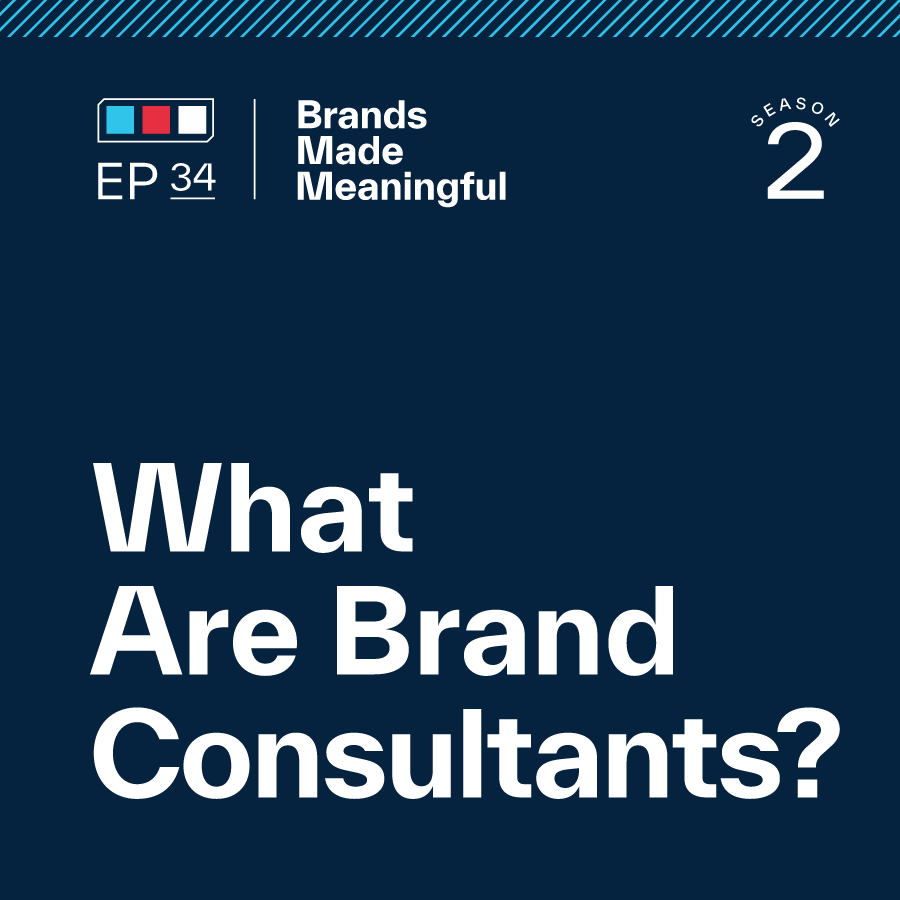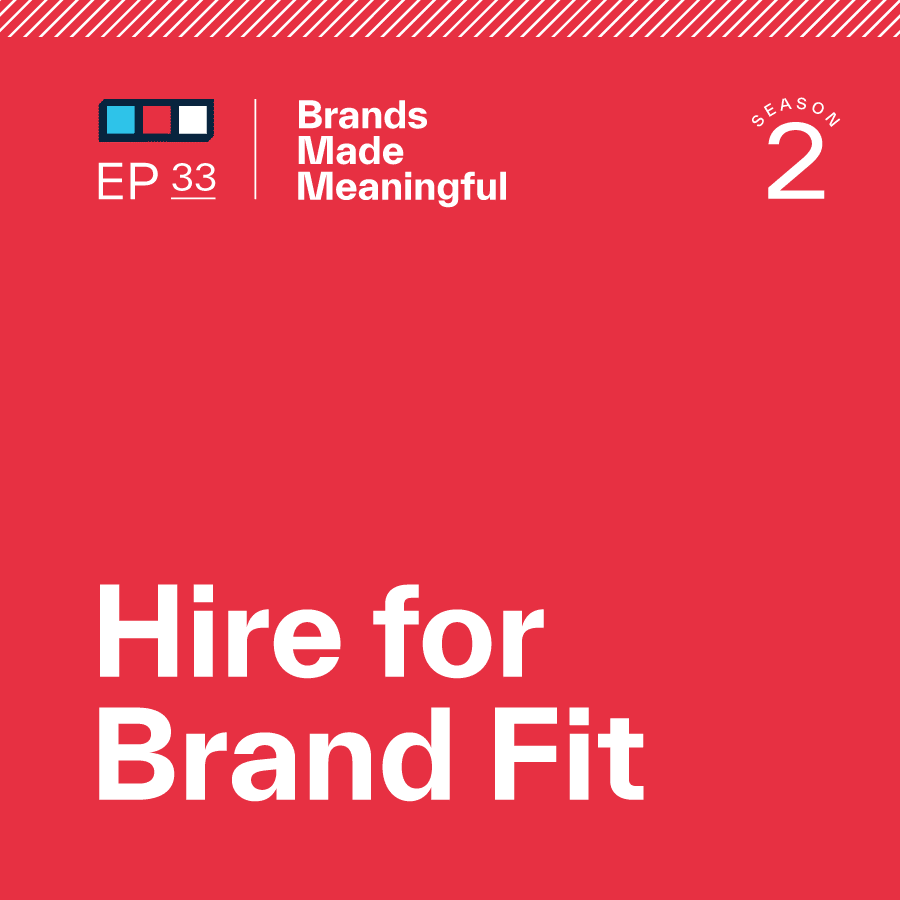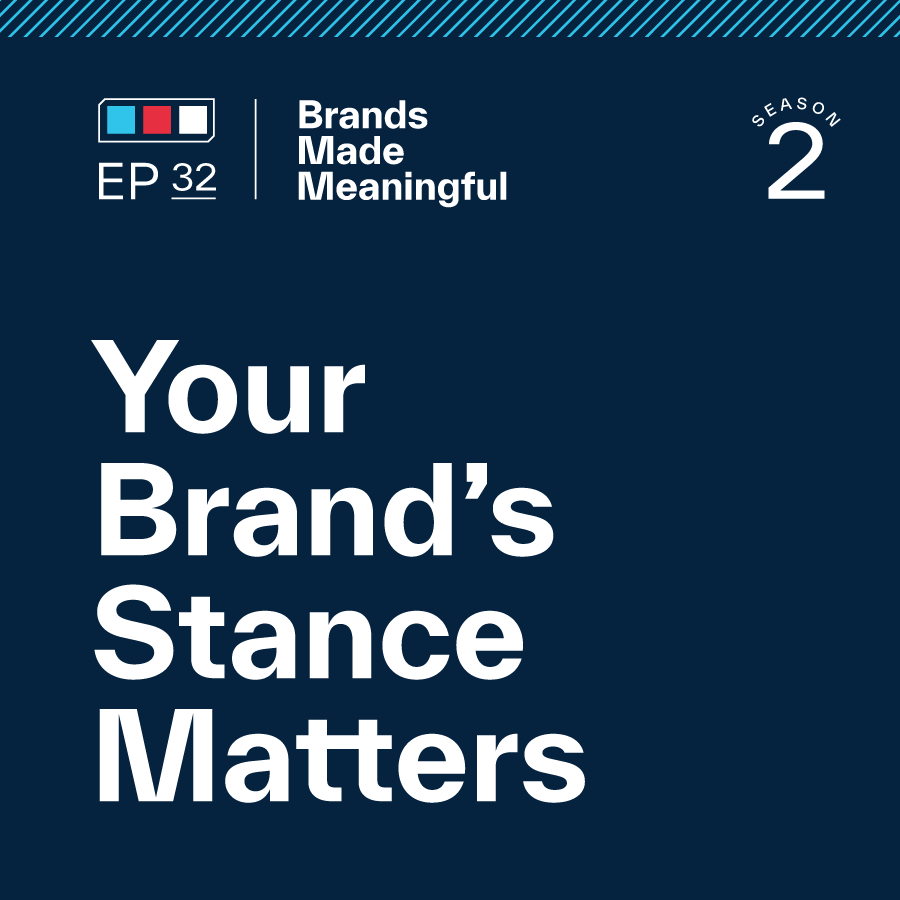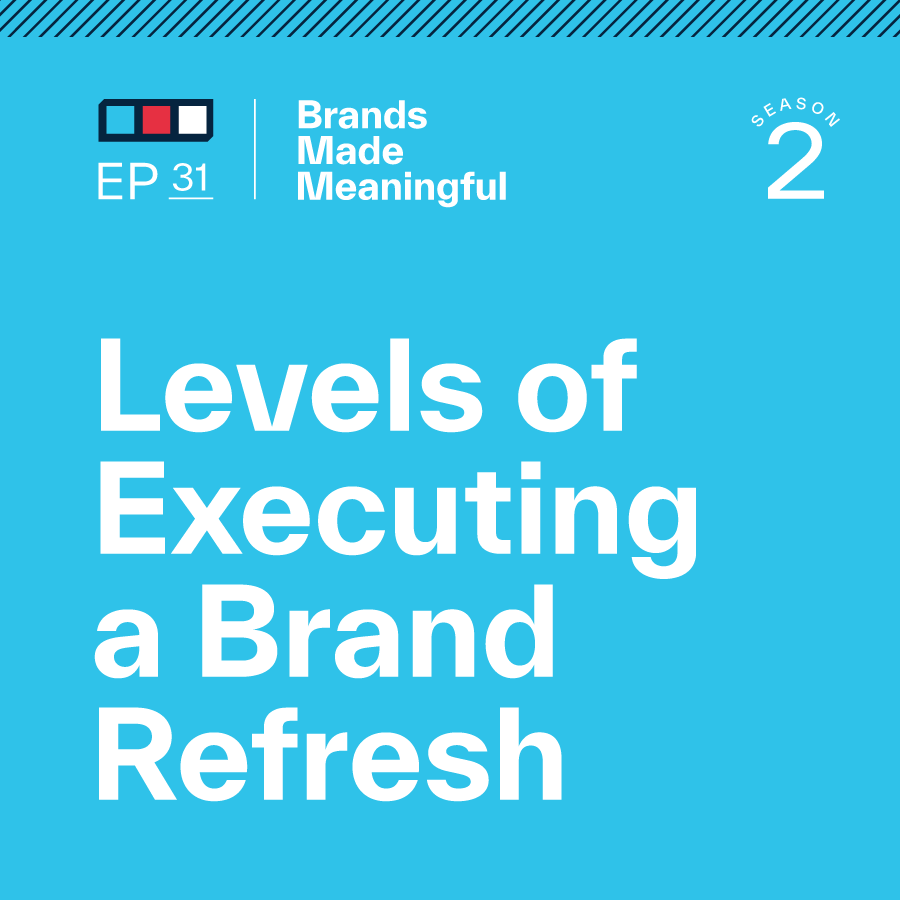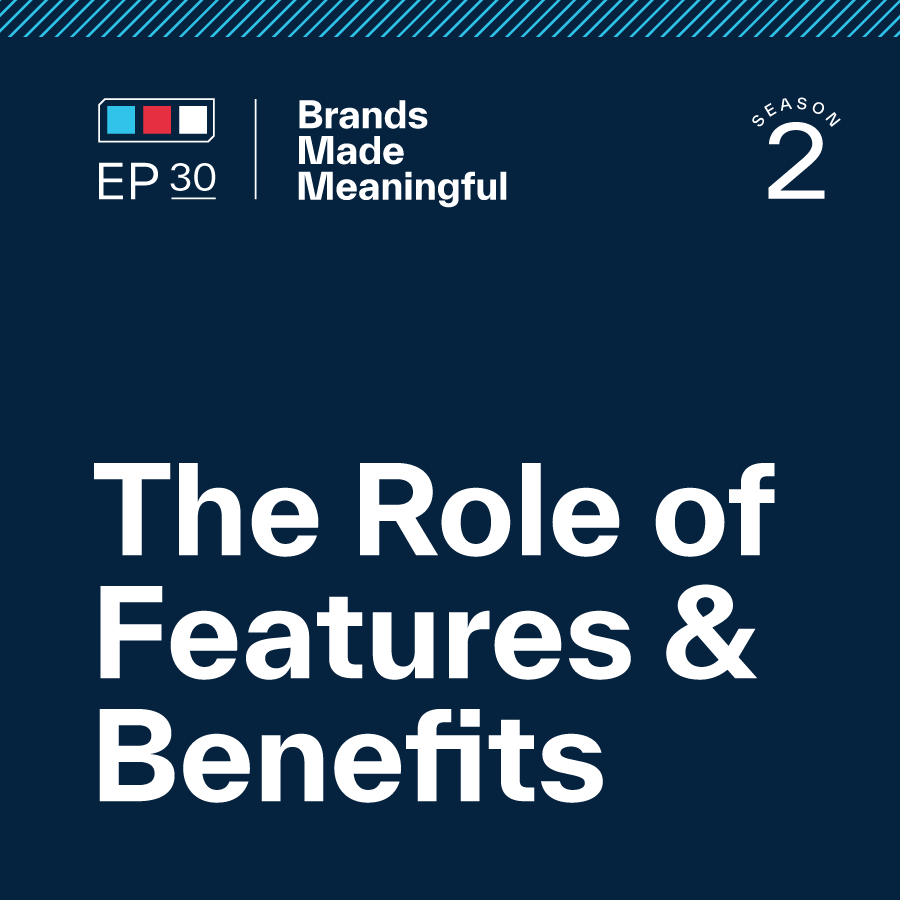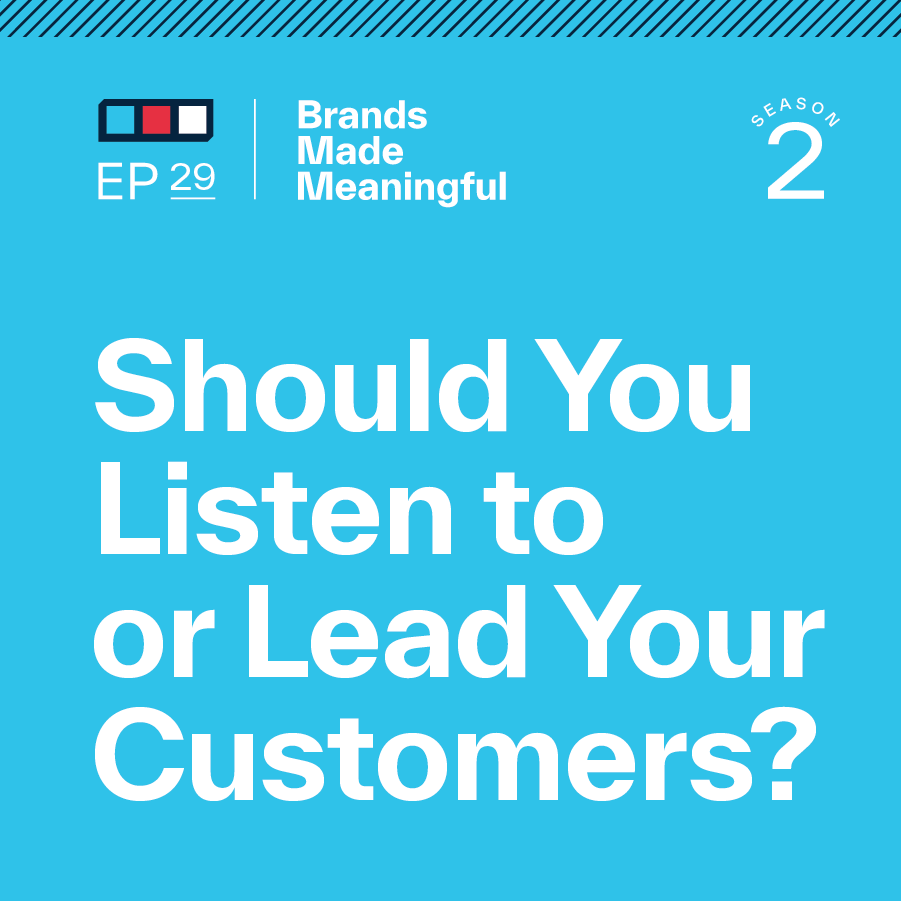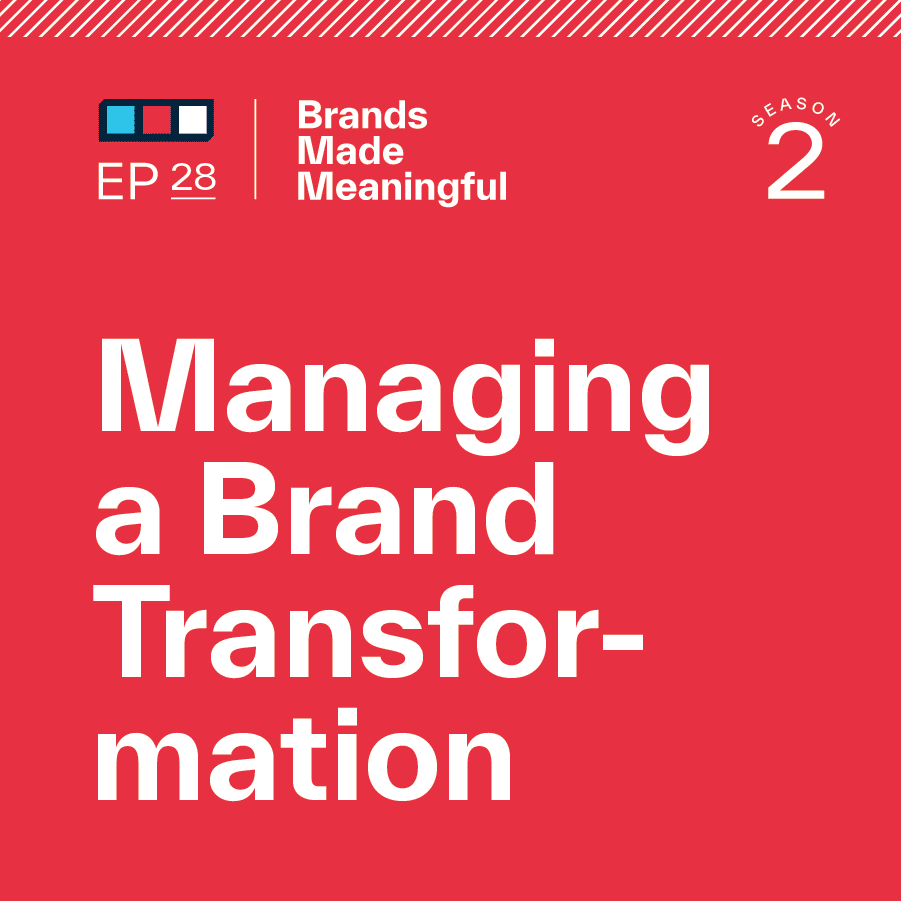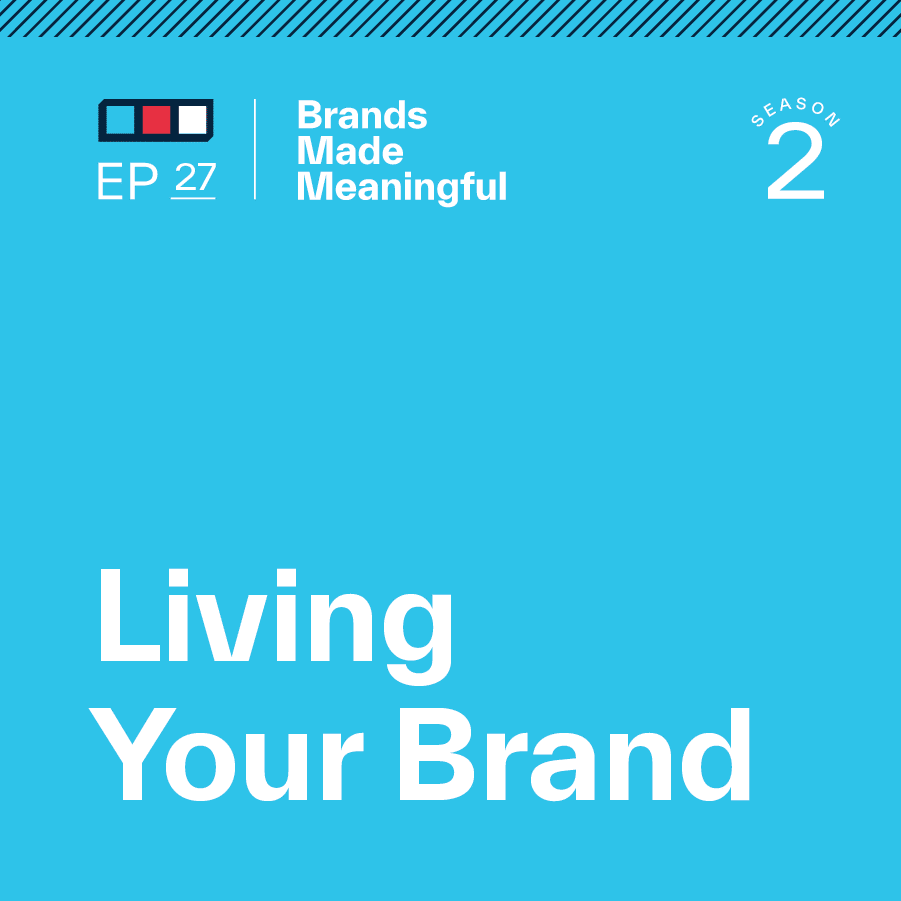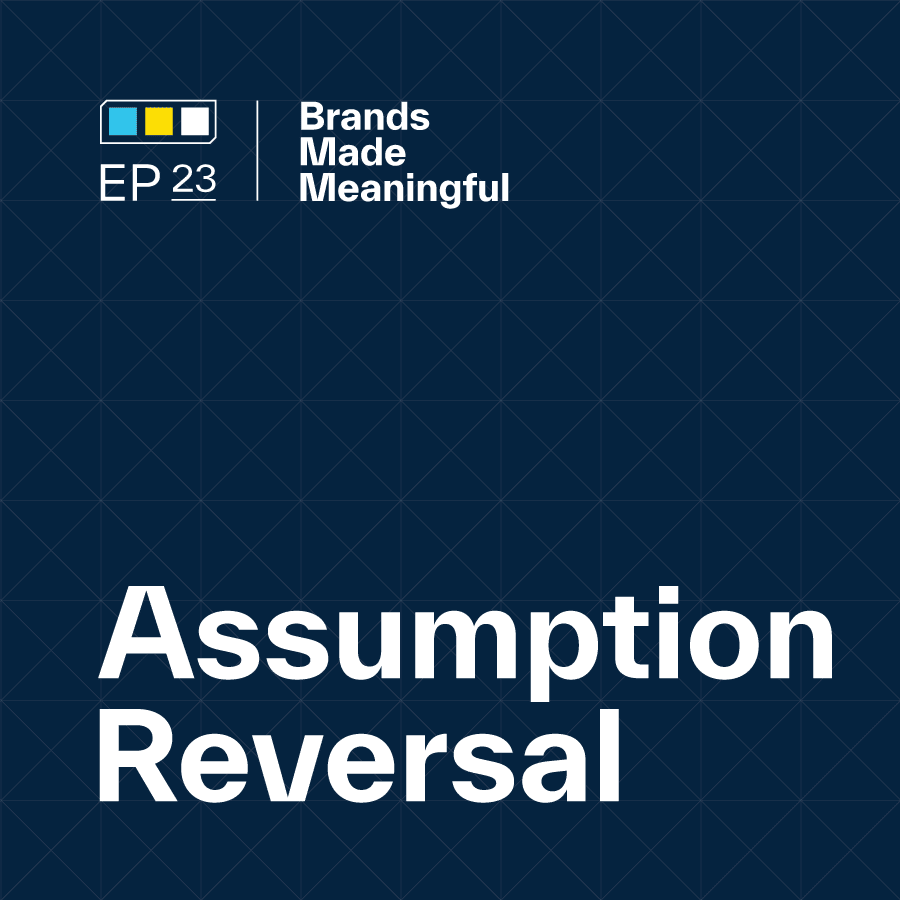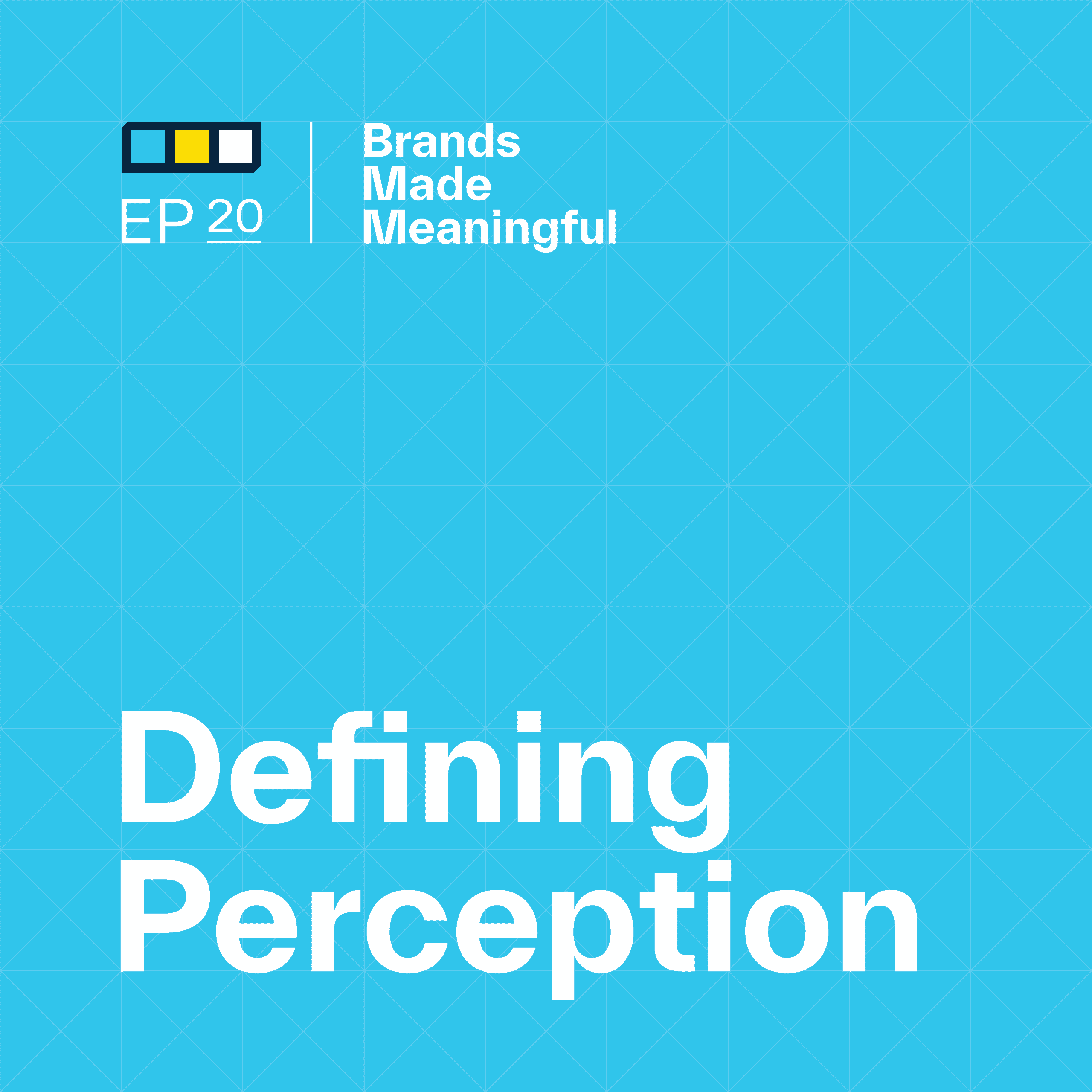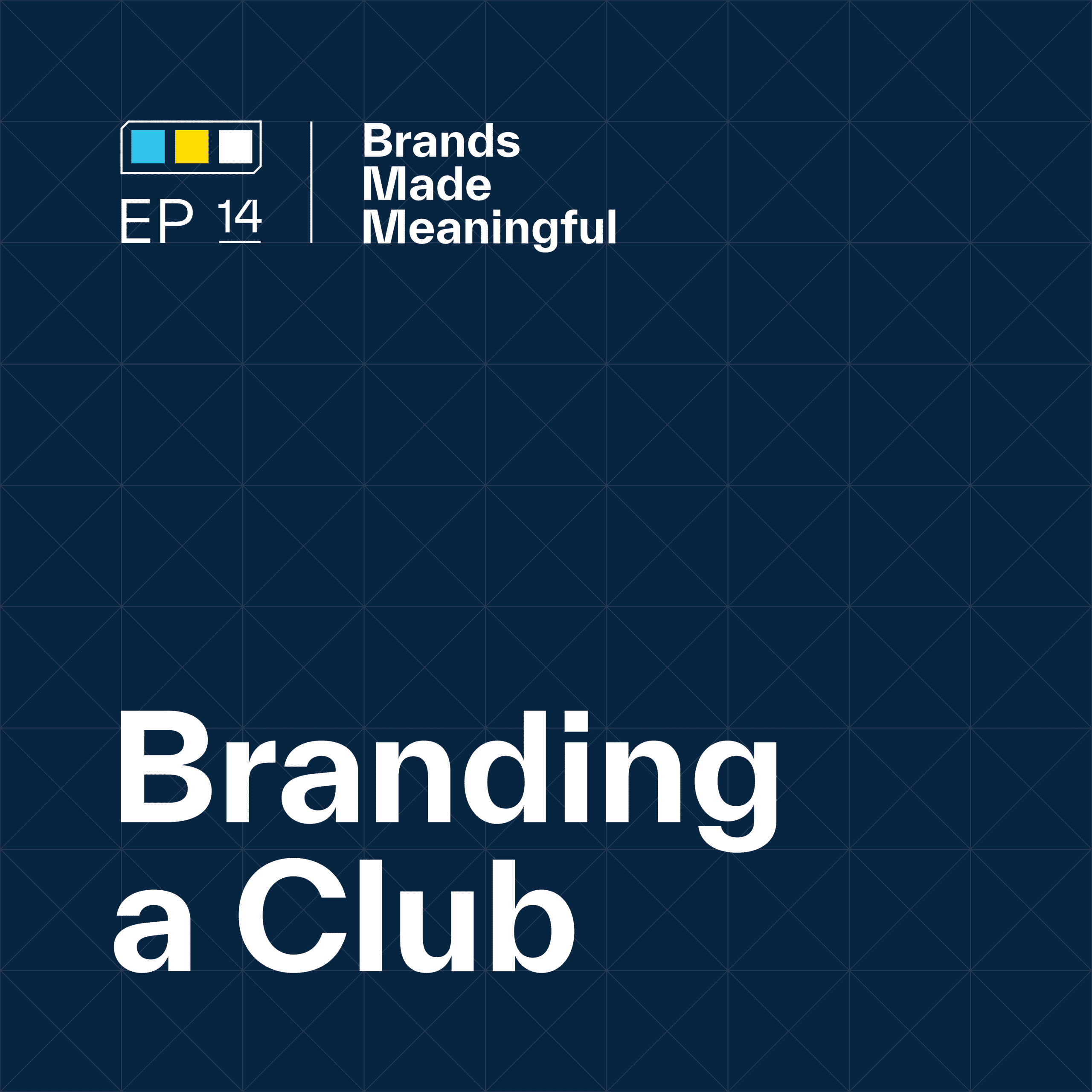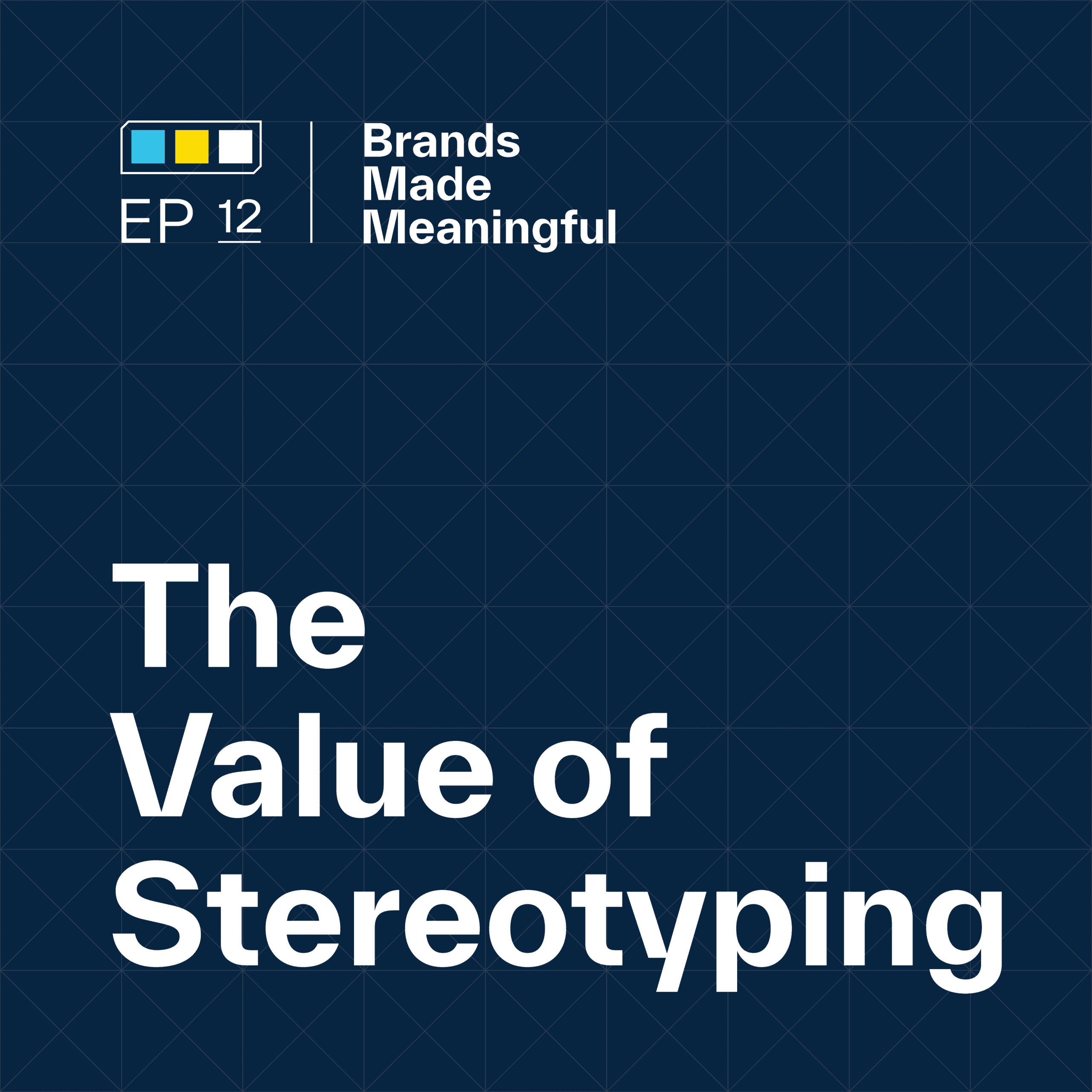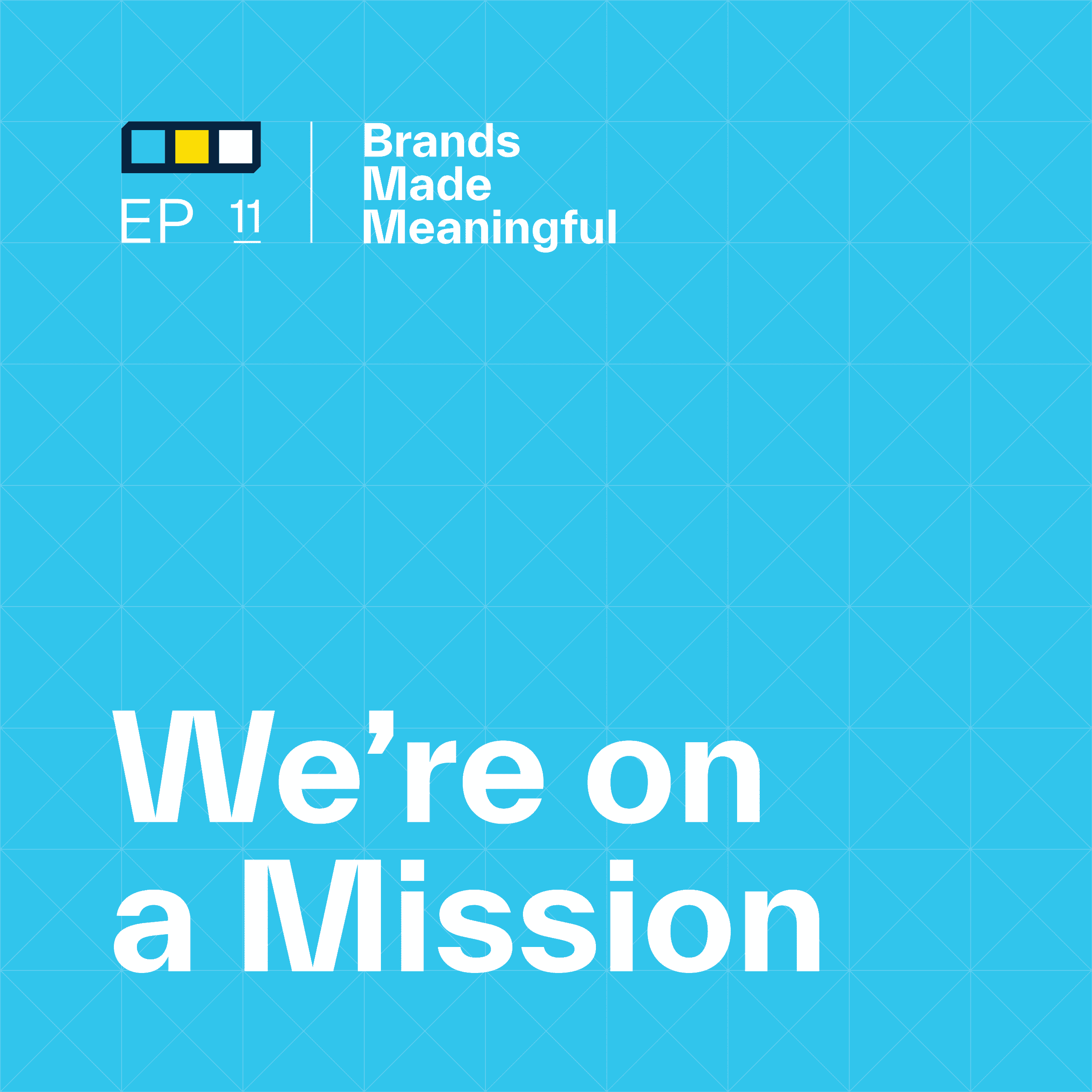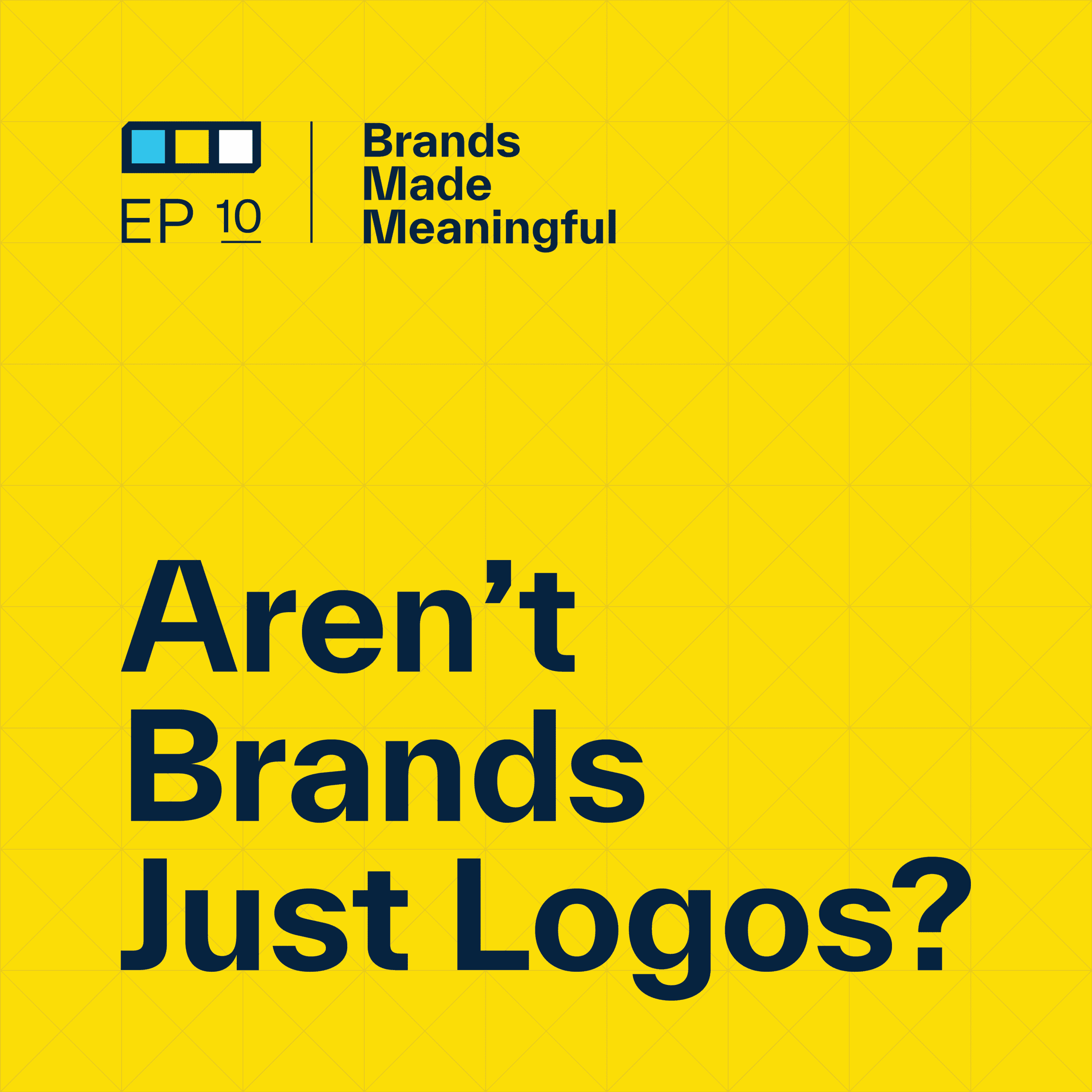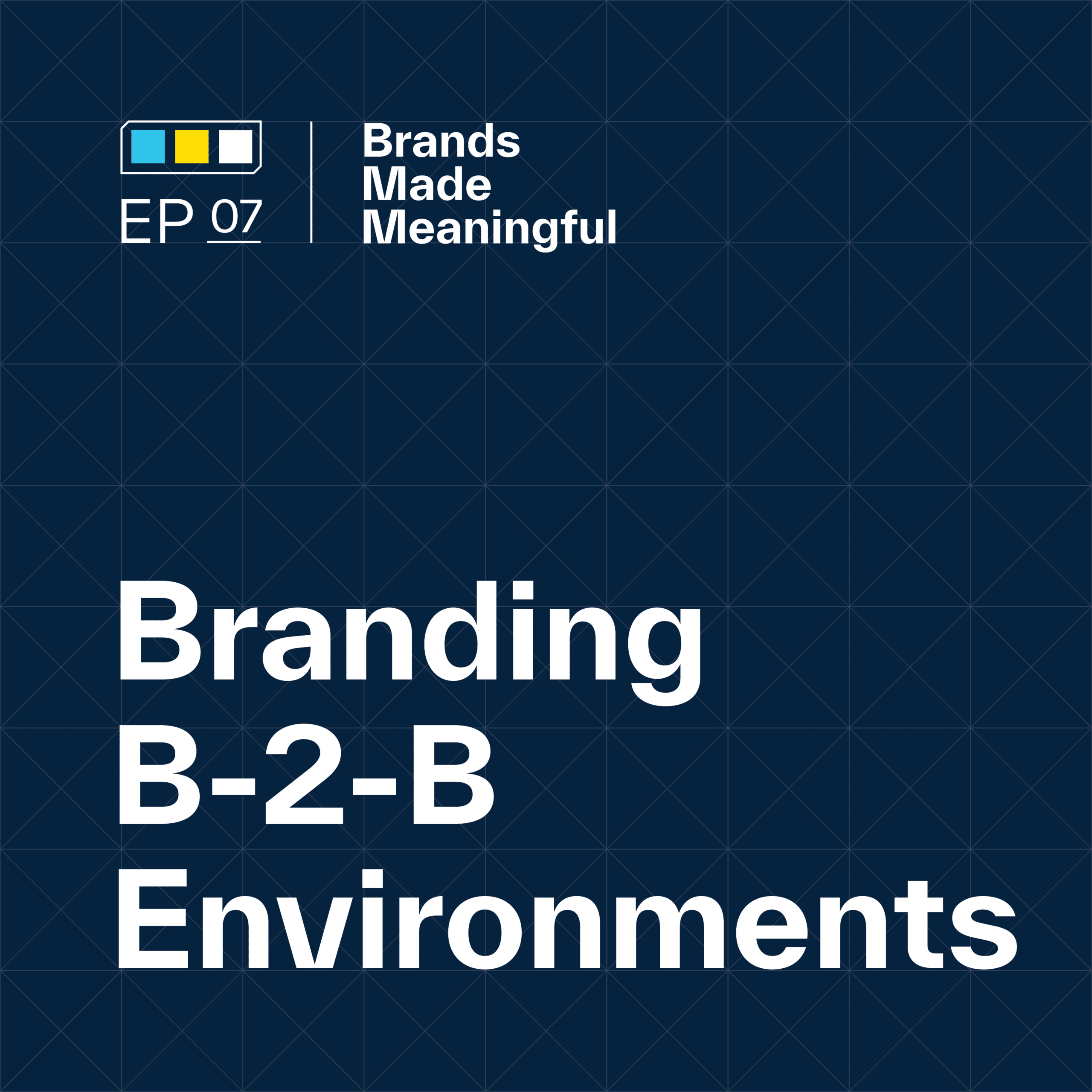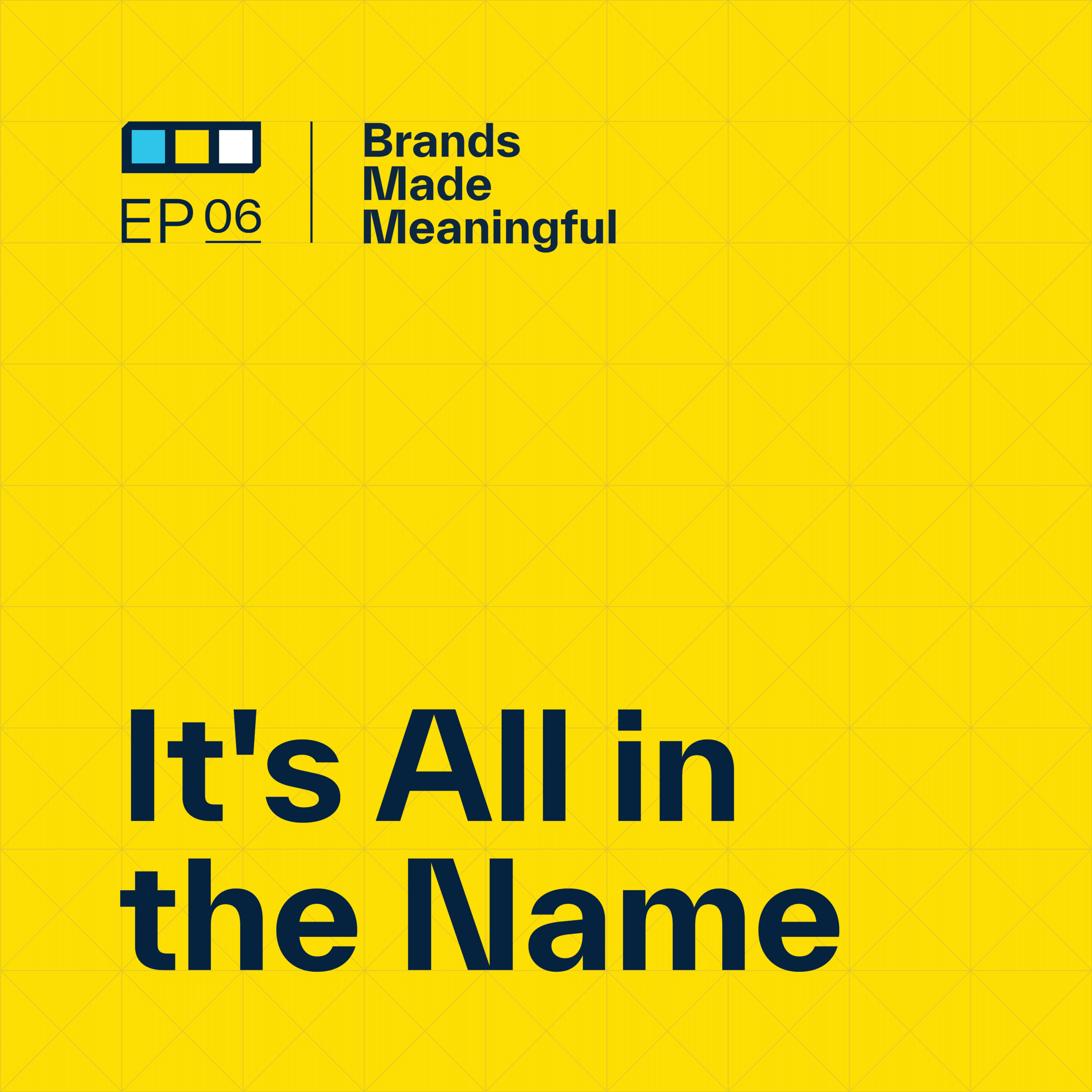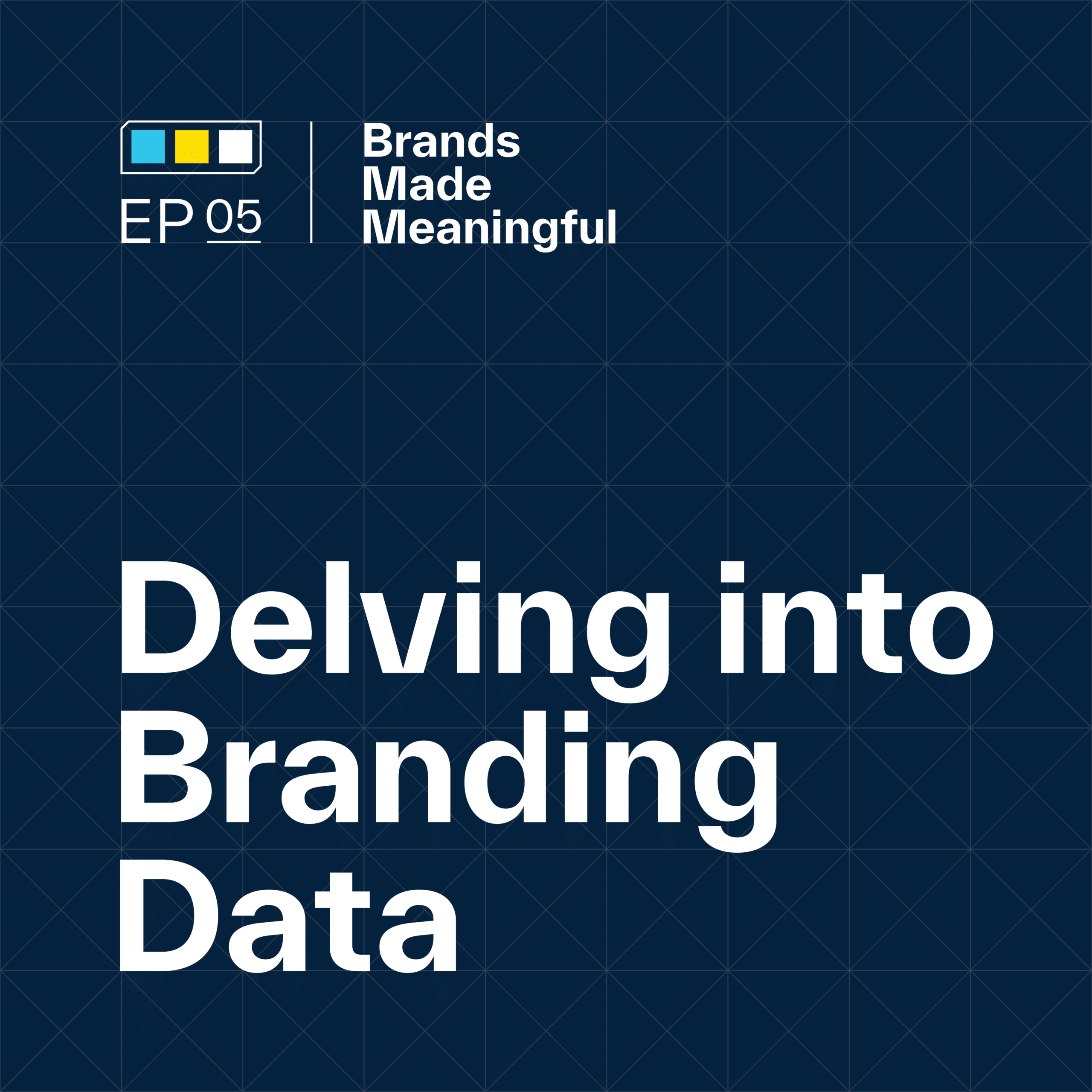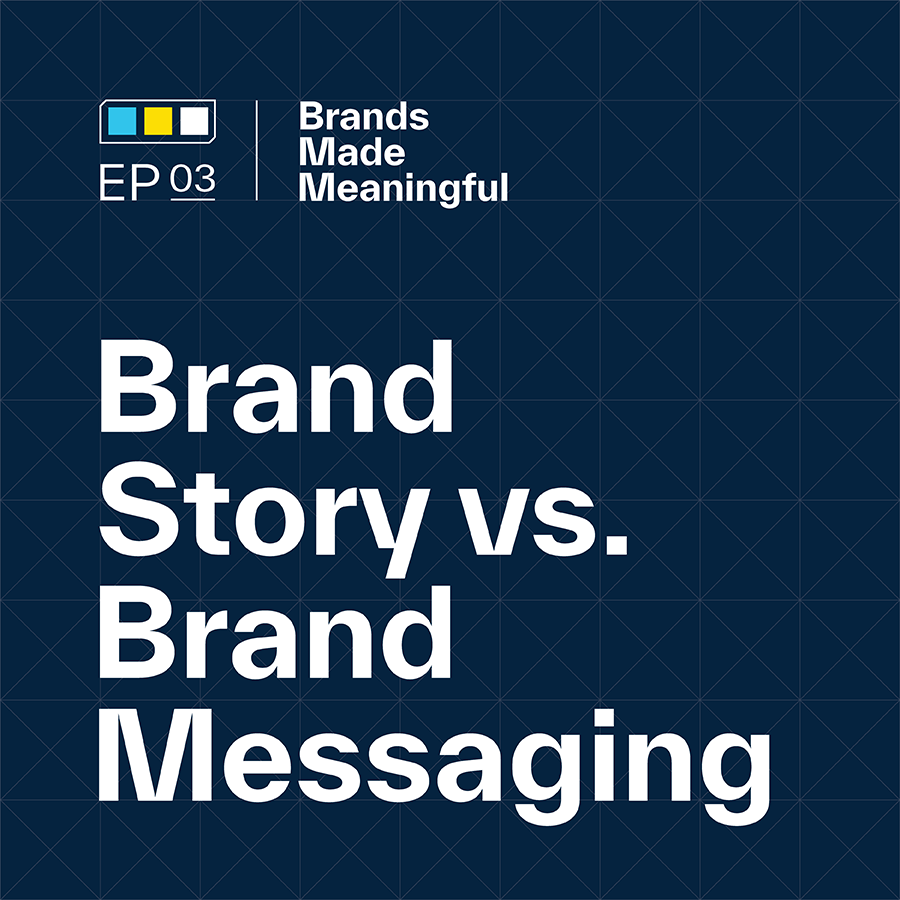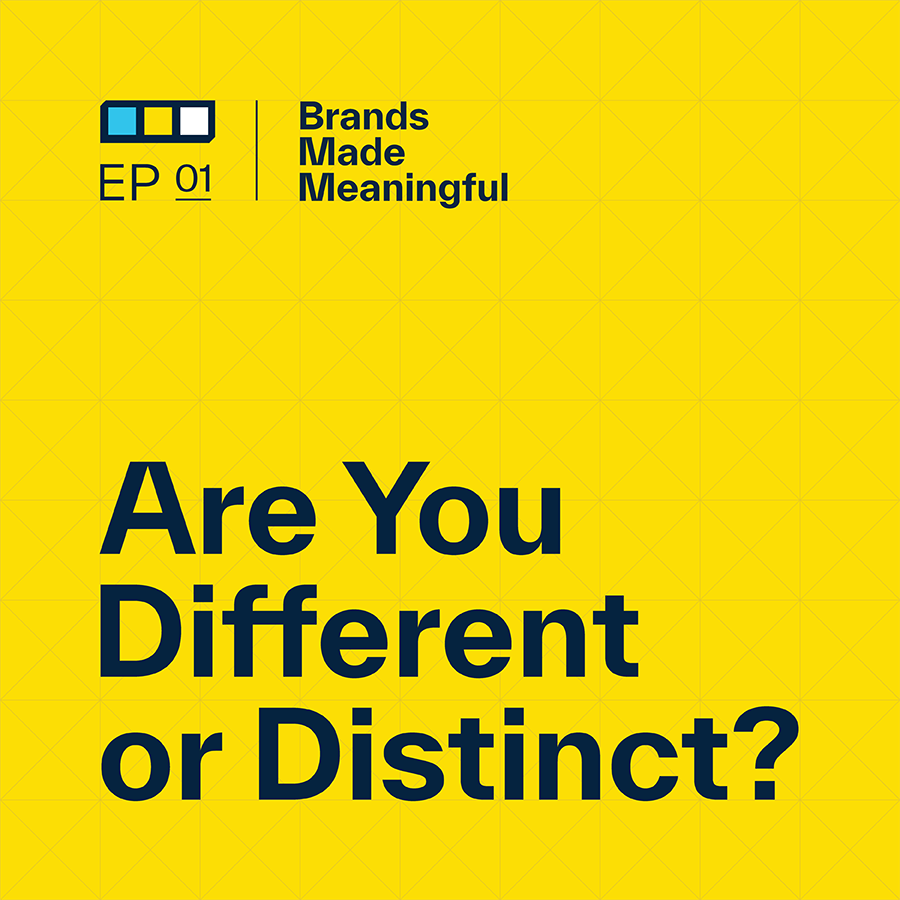EPISODE 22
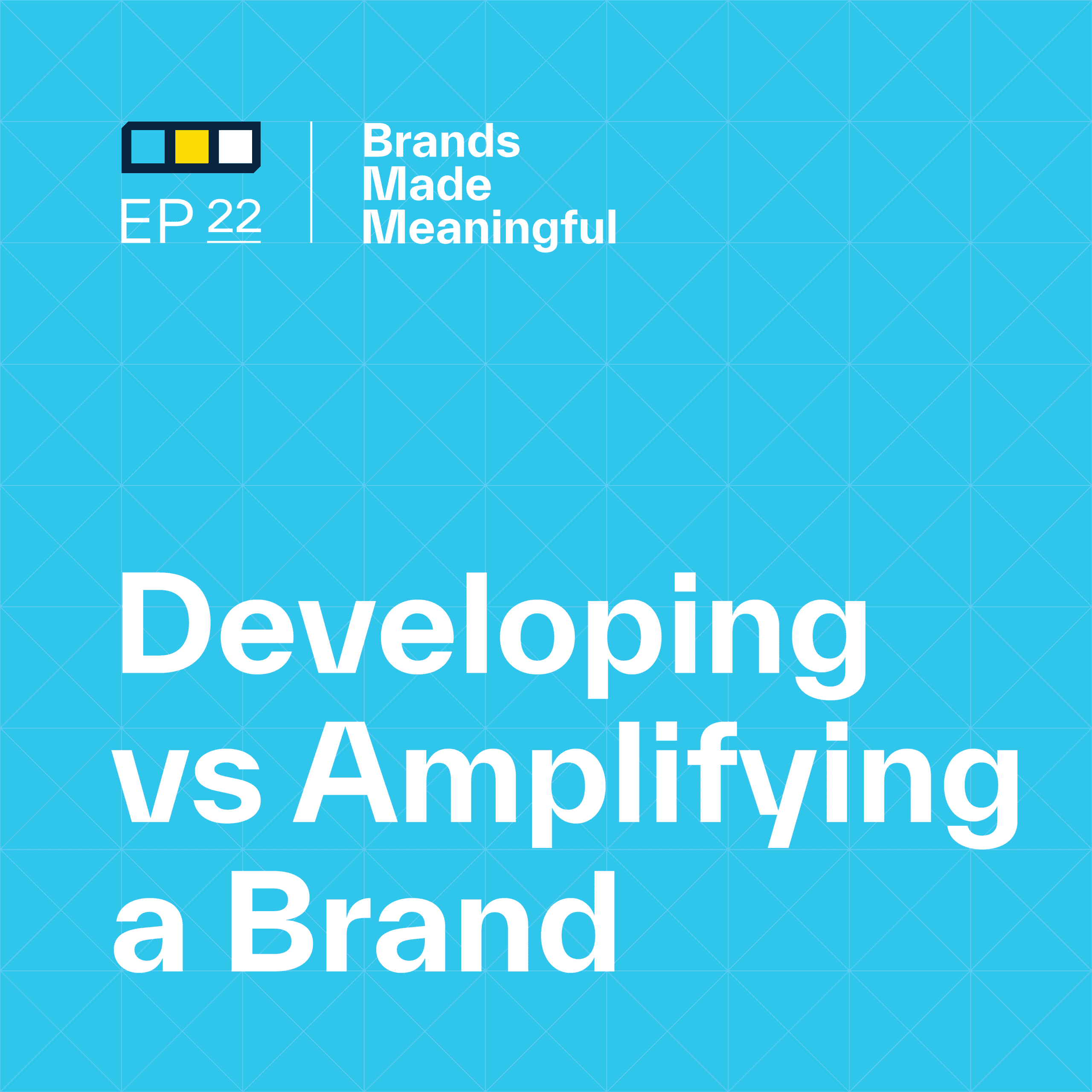
Developing vs. Amplifying a Brand
Episode 22
Another way to say it is, development is building and crafting your brand story, and amplification is then telling it.
EPISODE TRANSCRIPTION
Today we’re talking about brand perception.
Derek Hey, Tucker, what’s up?
Tucker I’ve been out of the country traveling. And then I got back yesterday.
Derek Searching the brands of Europe. What does the European branding look like?
Expand Full Transcript
Tucker It was actually a professional trip. I went for recon work – no, just vacation and whatnot. It was good. But you know, when you get back from vacation and you’re like, Oh my God, look at all these emails that you got to answer because you’re gone. Well, instead of that, I’m going to have a conversation with you about developing a brand or amplifying a brand. This is a conversation that we have a lot with our clients right at the beginning when we get into a more consultative space because they’re unsure of what they need, what they want. How does this all work? What’s going on?
Derek Well, they’ve already identified something that needs to change. They wouldn’t have called us in the first place if they were realizing the success that they had set out to achieve. Something’s off. So they’ve come to us. There are ten different aspects of a business that they’re running and they’ve identified their brand as one of those aspects that could be helping them – whatever it is, if it’s a lack of sales or a lack of growth or a lack of penetration of new markets. So then we start the conversation. So I jumped in on where you are probably heading to the next point.
Tucker So when people come to us and they’ve identified that their brand might not be as up to par as they want it to be, the first conversation we have is whether are we trying to develop it or redevelop it or amplify it. And that’s where we turn to this conversation going, Well, what does that even mean? Why would we even talk about developing a brand versus amplifying a brand? And for our process, what’s the difference? So we’re going to get into that today.
Derek And this is totally top of mind. We’re talking with an entity right now about this exact conversation. So for us, this is super fresh. This is something we’re actually in conversations with right now where we’re trying to help this organization be as successful as possible and help them answer that question. Is it the brand? Is it the brand that needs to be tweaked, refined? Is our story being told or are we just needing to find better ways to tell that story?
Tucker When we look at a project and say, Well, what kind of project is it? That first step of picking one of these routes changes the way that we look at that process. So if we’re developing, and we’ll get into this, there’s a different step process versus amplifying, which has a very different mindset to it. So let’s just get into it. Developing a brand or redeveloping a brand, that’s how I identify it. How about you talk a little bit about when someone would need to develop or redevelop their brand.
Derek How can I describe development in a word, and how can I describe this activation or amplification in a word? What I’m coming down to is development is strategy, it’s strategic, it’s strategically looking at your brand versus the amplification, and the activation becomes tactical. The tactics that you choose to amplify and activate your brand, you’re strategic in making those decisions. So I don’t want to be confusing. The word strategy gets thrown around in a variety of different ways, but development becomes foundational and amplification becomes about spreading the word, penetrating markets, and telling the story. Another way to say it is, development is building and crafting your brand story, and amplification is then telling it.
Tucker That’s a really good way of thinking about it. I think about developing as in looking at the DNA of a brand. The foundation, like you said, is to say, Where are we? Who are we? Why are we here? All these great big questions that people roll their eyes at that sometimes really help us understand the brand as a core piece. And then amplification is, like you said, spreading the word, making sure that all of those core pieces get overlaid across all the organization, whether that’s in H.R., whether that’s in marketing or leadership. How do we take this and apply it or amplify it across everything, all the channels, all the touchpoints, all the experiences that you can provide to employees and customers and partners and all those great things. That’s the amplification process. When I think of developing or redeveloping and someone goes, Well, we’re not sure which one we want to do. Do we want to do a redevelopment of our brand? Or do we just want to take what’s currently there and amplify it and spread it across? And I would say, Let’s talk about what’s happened to your organization in the last year or so. Has there been any really large change? Is there anything that’s different? Is there any kind of new direction happening? When we start seeing those clear changes, when you have a pivot point and maybe you have a new leadership team or maybe you have a different way of approaching your product.
Derek Product launch.
Tucker Exactly. And you have…
Derek A merger.
Tucker Big differences and you start seeing a change. That’s where we typically have an opportunity to redevelop a brand, kind of bring it back down and go, Okay, are we the same company that we’ve always been? And if we aren’t, how are we similar or how have we changed to then change our brand to match that?
Derek So what you’re talking about is a pause. As part of this conversation, before we would make a recommendation, there’s a pause. Most of the time, our conversations with clients that they’ve initiated start with tactics. Oftentimes they say, we need whatever. We need a trade show booth because we’ve got a trade show and a convention coming up. We need a better website. We need new swag, whatever it is. The list of the ways that a brand gets rolled out and gets tactical and tangible is infinite. But part of that pause is at least to have a conversation to say for those tactics and for that amplification to be successful, we want to make sure your brand is really strong.
Tucker If we take apart, let’s say, the website, which is a very common super tactic. I think that websites are easy for people to see. It’s your digital front door. It’s what everybody looks at. Every single piece of your online presence probably goes through your website would be a good guess. And so a lot of people look at their website and almost everybody hates their own website. It’s a pretty common thing for someone in a marketing department to look at their website and be like, God, this sucks. Super, super normal, right? Happens all the time. And so they come to us and say, I need a new website. And my first thought is, why do you need a new website? And then if they go, Well, because ours is dated and X, Y, and Z. If we were to just go in and redo the website and not address bigger changes that have happened deeper down in that brand, that website will probably be irrelevant in a shorter amount of time than if we were to look back deeper and go, What are the bigger pieces? What is the larger change that has happened and how can we make that change internally? Then address the website so it lasts way longer.
Derek If a company goes the route that you just described, which is very common, the changes that they make to that website end up being tactical. Maybe it’s an improvement in technology. Maybe it’s a better WordPress plug-in or an e-commerce application. Sometimes it’s just cosmetic.
Tucker Or it’s verbal. We have a lot of people that go, I hate my website, and we go, Why do you hate your website? It’s a great-looking website. And they’re like, Well, it just says this and it says that, So you don’t like your messaging? And then you go, Yeah, we don’t like our messaging. Okay, let’s talk about that a little bit, and then you dig a little bit deeper and it turns out that the website is not a problem at all. And what the real problem is, is that the way that they’re speaking doesn’t match the products or the change in direction that they have. And it makes them uncomfortable. So when we really see websites as the first tactic on this list, that’s an amplification piece. But that’s something that people identify as amplification. It’s really a development that needs to go back and go, Okay, what’s wrong with our brand if we can’t have a good website? Because it’s not that hard.
Derek We’re talking with another organization right now that I think we’re about ready to take the next step with. We’ve had this exact conversation with them and it started exactly like this. We need a better website. Tucker, you have – it’s like the seven whys. It’s Ask why till it hurts. We’ll do a whole podcast. You love the pain of, Ask why?
Tucker Yeah, I like seeing people’s blood vessels in their foreheads.
Derek And so we asked them, Why? Why do you need a new website? Well, because it doesn’t tell our story. That was about the third why. But we got to, Well, then what is your story? And they said, Well, I’m not sure, but this website’s not telling it. And so because they don’t know their story, they know some pieces and parts of it, that’s a big flag that says, okay, then it’s time for us to look at brand development. By brand development, I don’t mean we need to design a new logo. We need to look at the first step of a branding of a brand development process that makes sure that we’re putting that foundation in place for success.
Tucker To understand what the brand strategy is, figure out how we can move forward, and then understand what pieces stay and what pieces go. So when we do a redevelopment, and I know we’re spending a lot of time on development, but if we do a brand redevelopment, that doesn’t necessarily mean that we’re scrapping everything. We do a lot of brand redevelopments where we go, Don’t lose that. That’s perfect as is. That matches the strategy that we have. So it’s a little dangerous to go into a redevelopment and say throw everything away and move forward and whatnot. Usually, we would do the strategy and then we’d audit the brand as is and go, Okay, what needs to stay and what needs to go? Based on everything we’ve talked about, all the consumer insights we have, everything that we’ve gathered, what needs to stay and what needs to go, then we can move forward. So, that being said, let’s say the brand is solid, the core piece is perfect. How does that match what we do versus looking at the brand and trying to analyze it and trying to destroy it or change it? What do we do if it’s, Wow, this is just a great brand. It’s just not being used or displayed properly.
Derek And this happens all the time. Somebody’s analogy was the brand development. If you’re thinking about a football analogy, you’ve just charged all the way down the entire football field and now you’re stuck at the two-yard line and the brand’s developed and it looks great and it sounds great, but then you just don’t do anything with it. You stop there. You’re literally two yards short of a touchdown.
Tucker You’ve got to punch down.
Derek You got to get it through that. You got to get across that line. So there’s a variety of ways that we help organizations or that anybody that does what we do in the branding space helps somebody amplify their brand. People say amplify, launch, activate. This is where marketing and advertising come into play for the way that most people think about this. But, for us, it’s determining, first and foremost, What’s the goal? What’s the problem? What’s the opportunity? What’s the goal?
Tucker We normally take an approach to go, Who’s it for? What’s the goal here? And when does it need to be accomplished? And if we can start putting the parameters in there to go, It’s for this audience because it’s this, here’s the problem, and here’s what we really, really want to get out of this, that starts helping us shape what either a project or a campaign could be. That’s all amplification. And the way that it changes is that we take that core strategy that’s already in place. We take the brand, we take all the assets, we take the strategy from the brand, and we go, Okay, if we have this problem to this audience, how are we going to solve it using this basket, this bucket of assets that we’re already given, and how can we push this brand farther? So I think a lot of people get into branding and go, Okay, you have this brand now. You just apply it to everything. And I think the approach that we’re taking on a lot of these amplification projects is how can we evolve the brand? How can we take that bucket of assets, how can we take that strategy and how can we evolve it so that it meets that specific audience’s challenge so that it’s not the same brand for a decade? Over time, it becomes what it needs to be for each audience.
Derek The beauty of getting a brand in a good place first is that brand can be strong for a decade. For years and years and years. The amplification and activation components, because they’re tactical, can change and pivot and you can adjust them as the market changes. When you determine what’s been successful and what efforts haven’t, you can fine-tune those, Marty Neumeier says that branding creates and delivers value, but the activation and the amplification is what communicates that value. The amplification stage is where we help people buy or choose you.
Tucker I would say that that’s a good way of looking at it. The communication is perfect where you say, let’s build this thing, but it’s like almost let’s make it touchable for everybody else. When we create a brand, it is nothing if we don’t amplify it. Really. I mean, it means nothing. It doesn’t do anything. It doesn’t have legs, it doesn’t move anywhere. It doesn’t actually touch.
Derek It’s just hiding in a closet.
Tucker Exactly. It’s this star that no one can grab. And the branding process is really important for development. Without amplification, it really makes no difference because then we’re not actually using that really deep rich brand to build out impactful, needle-moving pieces.
Derek We had a company that we were working with specifically on this amplification piece. It was an interesting conversation. I don’t think it was fun for them, but it’s like, There’s good news and bad news. The good news is you’ve got a great brand. The bad news is nobody knows you exist. So the good news is nobody knows you exist and you’re already doing pretty well. Now, if we can just lean into this amplification piece, nothing but good things should happen.
Tucker The flip side of that is – good news is you have a great brand. Bad news is you’ve applied it terribly across all your channels or you’ve taken that and not actually really listened to the strategy that you put in place. A lot of people go to agencies just like ours, build a phenomenal brand, and then go, You know what, I have a marketing team. We’ll just take it and we’ll move forward. And that’s totally acceptable. People do it all the time. We work with large organizations that take a brand and they go, Well, I have a huge marketing department, I’m going to do this. And instead of having guidance using that brand, they just go, I’m going to use it as I see fit. But along the way, someone’s used it improperly, which then totally changes how it gets seen.
Derek What are a couple of examples that we’ve run across where people are marketing their brand improperly? What are some common misses?
Tucker Some common misses when we look at where people see this strategy and they use it differently is when, and I’m not going to say names because I don’t want to rock any boats, we’ve come in into marketing organizations where the CMO or the CEO has determined that they enjoy someone else’s marketing campaigns and they say, Wow, they do a really great job. Let’s just do that. Let’s do that. Instead of looking at what your brand is, what your brand needs to be for audiences, you look at a different brand, maybe a competitor that’s doing it, and you say, They did a great job. Why don’t we just do what they did? That’s where you see this flip where you’re ignoring what your audience really wants and who you really are to just try to match the competition.
Derek Another one that we’ve come across is missing where their audience is either accidentally or sometimes even semi-intentionally. We have one customer who used to advertise with a professional sports organization with a 99% elderly male audience. And all of our consumer insights and all of the research that we had done said that the audience for this specific organization was predominantly, let’s say, 40-year-old women. Well, those 40-year-old women aren’t attending or going to or watching those games. But the owner of the organization was a huge fan of the sports team. And this owner loved seeing their ads at those games, and he loved the corporate sponsorship and he loved the relationship. But it wasn’t making any traction or any headway into who their actual target market was and where their target market lived and moved and interacted.
Tucker We see this a lot. If you were to put a label on where does amplification of a brand fall short, my label for that is purpose over preference where they have had preference over purpose. They sat there and said, Well, I would like to see it like this, so I want to do it like this.
Derek I listen to this radio station. I like this hockey team.
Tucker They just put the blinders on and say, That’s what I want. So let’s do that. And that’s going to work. Whereas the people that we’ve worked with that have done a great job – some people have just taken this brand and they say, Okay, we need you to develop it or redevelop it, and then we’ll take the reins. And that happens all the time. And there are some people that do an amazing job with it and it’s like, Wow, you guys have really taken our work and done tenfold what could be done because you guys have just done so much purposeful work with this core piece of the brand. And I think their mindset is, I’m not the audience, so I need to figure out what the audience wants and I need to make sure that I’m in the places the audience is instead of being where I want to be. And that’s a totally different mindset for a CMO if they can take themselves completely out of the equation. And I think a lot of it is there’s some gut in there. There’s some gut reaction where they make gut decisions and it works out really well. But there are a lot of times when that gut decision’s not going to be right, and it would be way more helpful to get data on it or to figure out how we can find that right piece that communicates properly.
Derek How to be strategic about it. Thoughtful, purposeful, taking the step in a strategic phase of simply identifying who your customers are and profiling them. I think we talked about profiling in a previous episode. And figuring out who the three or four primary audience members are for you and your brand is a step that I think sometimes people take for granted and they just shift to telling their story instead of making sure that the story they’re telling is engaging to those three or four audience customer members.
Tucker And so when you’re looking at communication strategies across your marketing, you would look at it and say, How do I take this core brand strategy and overlay it on top of that communication strategy and take almost take word for word some of the most successful things that we’ve had as people looking at their brand, the core pieces of their brand, and just taking the messaging from that, just overlaying it on their communication strategies, even if it’s internal to say, Hey, this is how we’re going to talk to them. Now I need writers to go and say that in a different way. That’s a really easy way to do it and to take yourself out of the equation just for a second to see if it balances.
Derek You just said the word internal. We should not direct people that this conversation is only about your consumer or your customer or a retail type of transaction. The visitors of your website, as that example that we were talking about, are also prospective employees.
Tucker Absolutely. I think a lot of people seem to struggle with this idea that their brand is only for their consumers. We run into this a lot with sports organizations where they’re all in on the fans. Professional sports organizations, all in on the fans. Our website has to be all in on the fans. And it’s like, Yeah, but you know, players see that and employees see that and partners see that. And we have a lot of audiences here that aren’t your fans. And so if you put that in a B2B setting, it’s like your customers aren’t the only people going to your website. If you want great people working for you, they’re going to check out your website. And that website needs to speak to them just as much as it speaks to a consumer.
Derek And part of that amplification piece, once that brand has been developed, once the story has been developed, once the strategy, the way that the culture has been developed, that amplification is just as important internally. How is it communicated? How do you nurture it? How do you continue to reinforce that to the people that are on your team along with those prospective employees? So the brand’s a foundation for more than just retail transactions.
Tucker And if you think about the brand development or redevelopment, that’s crafting the story. And then the amplification of a brand is telling that story to specific audiences. And where people find the most success is understanding that their audiences are broader, are more diverse than they thought they were.
Derek It’s figuring out the audiences, figuring out where they are, and then messaging to them specifically in those places. It’s getting the right messaging to the right people at the right time.
Tucker So there’s a lot there. Let’s talk a little bit about how long this takes because I think that’s a big question people have, So we’re going to have to redevelop our brand. How long is it going to take to do that and then actually amplify it? Talk a little bit about timing. I know it totally shifts based on what your problems are. What do we need to do? But let’s put people at ease a little bit with what this is.
Derek It’s a good question. And, of course, the first way we answer this is. Well, it depends.
Tucker That’s my favorite answer.
Derek It depends. It varies. It’s custom. Let’s use the example of a brand that’s determined that it needs to be refined and totally redeveloped. How long does that process take? Which then sets the stage for the amplification? And I would range that in the 6 to 9 months range.
Tucker Like you said, depends based on naming, based on everything else. Just for clarity here, if we have to name a brand from start, that adds a good month or so on to the process. There are a lot of things that go into play – depends on if you’re a national brand, international brand, depends on all of those things based on trademarking and all of that. And so if we’re looking at that, if you said 6 to 9 months generally for a development process, amplification is different because that’s an ongoing thing. You constantly amplify. You’re constantly evolving. You’re constantly figuring out how to better market, how to better communicate to all these different audiences. We had a brand that launched earlier this year, Game One, awesome people over there.
Derek Game One Sports.
Tucker Shout out. They do a great job at the amplification process because of the way that they look at it. We developed their brand. It took about 11 months to do the whole thing.
Derek Because it was a little bit more complex, there were some complexities and it was on the more comprehensive side as it required a new name.
Tucker Very comprehensive, new name. National brand sporting goods is generally a tricky naming and we can get into that in a different conversation. But there are some nuances there with the legalities and whatnot. Took 11 months to do that first part. And then the second part was we did the whole amplification process in probably three months to do all the key touchpoints. We call that the minimum viable product touchpoints. How can we apply this in the minimum possible way just to get it launched because they were just launching this company? That took about three months, I would say. And they’re doing a great job now because they’re looking at it as a version two. Now they’re like, We put out our minimum viable product. We put out all of our key brochures to our salespeople and we did our website. And now they’re looking at it. And as we’re talking, it’s been about five, six months since those have been launched. And they’re looking at now and going, You know what? How do we be better? How do we evolve this now? How do we do version two – move that minimum viable product to the next level? Because our audiences will never be satisfied. They understand that this is not a one-and-done game. This is a constant competition with themselves to move forward. Like I said, we did three months to do a minimum viable product on amplification. But really it’s an ongoing thing. It’s How do we assess these things? How do we do better? We’re now in the auditing stage of going, now let’s look back at the last six months. Let’s audit everything and say, how can we do that better?
Derek How it’s working.
Tucker What’s working really well from a marketing standpoint on their website and from a recruiting standpoint on their website and what’s not and why is it not? And then how do we make it better? How do we push the brand to be better than it has been? And if you have that mindset, there’s really nothing you can do wrong, because if you’re looking at your brand in a critical sense all the time, Hey, six months ago we did this, but we’re not perfect. So what did we do wrong? What could we do better? And how do we be a better brand for our audiences moving forward? Then it’s kind of cake. I mean, you’re then you’re living in a great spot.
Derek We had an awesome conversation with the head of their marketing team, and she made the comment that this whole activation amplification marketing component of what she’s leading her internal team to do that we helped them with on some of the pieces is been incredibly easier than it has been in other organizations that she’s worked because the development of the brand was done so strategically and the story was created so well for them that they’re not guessing or reinventing or questioning their audience, the strategy, their competition, their name, their messaging, their core story, their identity. Now it’s just, How do we get in front of those people and be distinctive and differentiated and continue to push ourselves so that our marketing system grows? But they don’t have to reevaluate their brand. The branding for them shouldn’t have to be readdressed for years.
Tucker The process that we take with developing a brand, the reason why it takes 11 months, is because there’s a lot of detail that goes into it. When we give someone a brand book, that’s an 80-page thing, it has rationales for everything, and it’s almost all story-based. I know a lot of brand books get into the nuances of photography and the nuances of graphics and nuances of creative. But those nuances don’t really help someone in H.R. making recruiting decisions. There’s a difference between a brand book and a style guide.
Derek That’s the difference between a brand and a logo. A logo needs a style guide – color, fonts, usage. A brand book illustrates how you live the brand.
Tucker It’s, What is our story and how do I use that story to better build this company the way it needs to be? And I think that’s where people run into trouble – when they’ve worked with people and they’ve done it in-house where they’ve focused their brand on the nuances of creative. And it’s not about that. It’s more about the story, it’s the nuances of the story. And how do we build a story that is able to be told in a million different ways, but is still that core same story? That’s where you find success.
Derek So, closing thoughts – if an organization is identifying that they think they could be doing better in their market, whether that’s recruiting or selling or growing, and they’re looking at their brand as one of the aspects of their organization that they think could help them do better, and they’re thinking about redeveloping their brand or just be doing better education, what are a couple of points of recommendations or advice that we might give them?
Tucker My first recommendation is to ask why seven times, and we’re going to do a whole podcast episode about the seven whys.
Derek I’m already in pain.
Tucker And that’s super exciting. But ask why seven times. If you don’t like your website, ask why seven times until you get something that’s bigger than, I just don’t like the way that looks. If you can get there, then that means there probably is something in the development of your brand or the redevelopment. It’s not broken, but there might be a few holes that might need to be patched that make that a little bit more solid. If you can get through the seven whys and your answers are still really tactical, then I would say that you’re in a good spot with your brand. You know your story. You know what it says. If one of your answers to one of those whys is, Well, we’re just not telling our story. Our story is X and we’re not telling it. Then that means you just need to relook at how you amplify your brand because you have a story, you have a story that you feel is really strong and all you need to do is tell it in another way. If you can’t get down to that story, then you probably have something that’s wrong or you say, Well, our audiences have changed and our story is this, and it’s just not impactful. It’s just not an impactful story. Then you might need to be redeveloping it.
Derek Well said. If anybody listening has a topic around branding that you would like us to have a conversation about, please shoot us a message and let us know. We’d be happy to take it on.
Tucker Love when people have questions. Because, you know, Derek and I just sit here and think about what people want and it is actually really helpful when someone says, Hey, would you guys talk about this? And we go, Absolutely. So feel free.
Derek So let us know. Thanks for listening. Sussner is a branding firm specializing in helping companies make a meaningful mark, guiding marketing leaders who are working to make their brand communicate better, stand out and engage audiences to grow their business. For more on Sussner, visit Sussner.com.
More Episodes Like This
Building Brand GuidelinesEpisode 65
Derek and Tucker show us how to build infrastructure guidelines to unify your brand experience across the board.
Club Identity SystemsEpisode 64
Derek and Tucker cover what Identity Systems entail and how to discern between internal and external methodologies.
Navigating Branding With a BoardEpisode 63
Derek and Tucker bring clarity to uniting your company under one cohesive vision.
Putting a Committee TogetherEpisode 62
Derek and Tucker assemble your need-to-know facts when putting together your committee.
The Guiding Principles of Private ClubsEpisode 61
Derek and Tucker go over the top ways private clubs can find the balance between pleasing old members while attracting new ones, all while making moves towards the future.
How Color Affects PerceptionEpisode 60
Derek and Tucker cover how to best convey your business with color.
Brand EcosystemsEpisode 59
Derek and Tucker break down how to craft effortless experiences when considering your brand as a whole.
6 Types of Brand TransformationEpisode 58
Derek and Tucker dive into 6 distinct types of transformations for a wide range of brands.
Tournament Branding For ClubsEpisode 57
Derek and Tucker discuss designing and delighting your club members with tailored events.
Brand Promoters & DetractorsEpisode 56
Derek and Tucker discuss how high level promoters increase your NPS and how to turn the tides on your detractors.
The Loudest Voices in the RoomEpisode 55
Derek and Tucker talk about gathering feedback while prioritizing every voice.
Determining A Primary AudienceEpisode 54
Derek and Tucker discuss if and when you should be honing in on your audience vs. casting as wide a net as possible.
Branding For ExclusivityEpisode 53
Derek and Tucker discuss the intricate process of naming your brand.
Measuring Brand SuccessEpisode 52
Derek and Tucker discuss how we measure our success in branding and a few key KPIs that help us understand our impact.
Branding For ExclusivityEpisode 51
Derek and Tucker breakdown how brands can create the perception that they are exclusive and only for a certain type of consumer.
What Makes A Brand SurprisingEpisode 50
Derek and Tucker break down the Sussner formula that we believe leads to a surprising brand.
Breathe Life Into Brand TraditionEpisode 49
Derek and Tucker discuss the intricacies and common pitfalls of branding for Private Golf Clubs.
They Key of Visual DifferentiationEpisode 48
Derek and Tucker break down the importance of differentiating your brand on a visual level.
Branding For Private GolfEpisode 47
Derek and Tucker discuss the intricacies and common pitfalls of branding for Private Golf Clubs.
Dealing With An Identity CrisisEpisode 46
Derek and Tucker breakdown how to identify and remedy a brand's identity crisis throughout thoughtful and intentional brand management.
Branding vs MarketingEpisode 45
Derek and Tucker discuss the differences between Branding and Marketing and how to make the two compliment each other.
Build Your Brand's FoundationEpisode 44
A brand's foundation is a critical element in being successful in the long-term.
Building a Constructive Branding ProcessEpisode 43
Derek and Tucker break down the steps required to build the most constructive and meaningful branding process.
What Makes a Brand Relevant?Episode 42
Relevance is a key piece of a brand's identity for creating clarity and connection.
Your Right to WinEpisode 41
Derek and Tucker discuss the “Right to Win” and the odds of your brand's success within your target market.
An Intro to Sub BrandingEpisode 40
Derek and Tucker discuss the nuances of developing sub-branding and strategies.
Conquer Branding FearsEpisode 39
Derek and Tucker dive into how to overcome the fear of change and the nature of constant refinement of your brand.
Balancing Strategy & DesignEpisode 38
Great strategy is a necessary foundation for great design—and great design brings great strategy to life.
Branding PrioritiesEpisode 37
Branding priorities are the actions and initiatives that shape or enhance a brand's identity, perception, and market position.
Invest in Your BrandEpisode 36
Investing in your brand benefits your company as a competitor in the marketplace, builds trust with customers, increases perception of quality, and drives employee engagement.
Why is Positioning Scary?Episode 35
Narrowing the brand's position is really a strategic decision to focus the brand's offerings, messaging and target audience on a specific niche or segment within the market.
What Are Brand Consultants?Episode 34
Derek and Tucker discuss the importance of hiring expertise with a wider breadth of knowledge than just visuals.
Hire for Brand FitEpisode 33
Hiring people that fit your brand is key in order to maintain brand authenticity, positive culture, and consistent messaging.
Your Brand’s Stance MattersEpisode 32
Your stance can help define your brand from a core level and make branding, hiring, and marketing not only easier, but more meaningful.
Levels of Executing a Brand RefreshEpisode 31
If you have a brand strategy in place, how do you execute it?
The Role of Features & BenefitsEpisode 30
Derek and Tucker discuss the importance of features and benefits within the context of branding, selling, and marketing your products and services.
Should You Listen To or Lead Your Customers?Episode 29
Within the challenge of any rebrand is the challenge of managing customers' perception of change.
Managing a Brand TransformationEpisode 28
Episode 28 discusses the highlights and challenges of rolling out a new brand, both internally and externally.
Living Your BrandEpisode 27
Your brand is not this shiny trophy on the shelf. It is something that you are molding every single day.
What Makes a Brand Authentic?Episode 26
Season 2 starts off with a discussion about building authentic brand experiences, both internally and externally.
Reviewing your Competition's CreativeEpisode 25
Derek and Tucker discuss the process of reviewing your competitors' creative strategy to better position your brand within the market.
Interviewing your Audience for InsightsEpisode 24
This episode details the process and benefits of interviewing your audience as part of the branding process.
Assumption ReversalEpisode 23
Derek and Tucker discuss how we change our thoughts and get into a different mindset to refine and revise our branding.
Developing vs. Amplifying a BrandEpisode 22
Another way to say it is, development is building and crafting your brand story, and amplification is then telling it.
Refreshing a Sporting Goods BrandEpisode 21
This episode shares the steps behind Sussner’s work in refining the Shock Doctor brand.
Defining PerceptionEpisode 20
Derek and Tucker discuss the positive and negative impacts of brand perception.
What is a Brand?Episode 19
Derek and Tucker discuss what defines a brand and what makes them successful.
Branding Golf Courses vs Golf ClubsEpisode 18
Derek and Tucker further hone in on golf course design.
Refreshing a Golf CourseEpisode 17
Derek and Tucker discuss the bar for golf course design – and how to push past it.
Let’s Talk Taglines Episode 16
Derek and Tucker talk taglines in today's episode.
Refreshing an Athletic DepartmentEpisode 15
Derek and Tucker sit down today to discuss what logos mean within branding.
Branding a Club Episode 14
Derek and Tucker discuss how to brainstorm branding a club.
An Intro to Internal Branding Episode 13
Derek and Tucker discuss the power behind internal branding.
The Value of Stereotyping Episode 12
Derek and Tucker sit down today to discuss the meaning of stereotyping within the branding world.
We’re on a Mission Episode 11
This episode digs into the rallying cry for the greatness your team is going to accomplish.
Aren’t Brands Just Logos? Episode 10
Derek and Tucker sit down today to discuss what logos mean within branding.
The Business You Are Really In Episode 09
Derek and Tucker sit down today to discuss how to discover what business you are really in to better understand your mission statement.
Clarity of Vision Episode 08
Derek and Tucker discuss the importance of looking ahead towards the big picture to better hone the purpose behind what we do in the now.
Branding B-2-B Environments Episode 07
Derek and Tucker discuss the Branding of Spaces.
It’s All in the Name Episode 06
Derek and Tucker discuss what a name can say - and not - about your company.
Delving Into Branding Data Episode 05
Derek and Tucker jump into the discovery phase of branding before it hits the drawing board.
Content Made Meaningful Episode 04
Today Derek and Tucker discuss the concepts within content and its common misconceptions such as the phrase "Content is King."
Brand Story vs. Brand Messaging Episode 03
Your story matters.
Visuals That Take The Cake Episode 02
Derek and Tucker sit down to discuss visual impact and what that could mean for your brand.
Are You Different or Distinct? Episode 01
It's not about being the only option, it's about being the right option. Join Derek and Tucker as they discuss Differentiation & Distinction.


